After six month in USA it felt good leaving for Canada again. We found a day where it looked like we would have a nice reach most of the way to Lunenburg on a 50 hours sail. We wanted to have a good distance to the notorious Cape Sable as like many other capes it can stir up some horrible seas when the corners meet and the wind is against the current – and here there is strong current and tide.
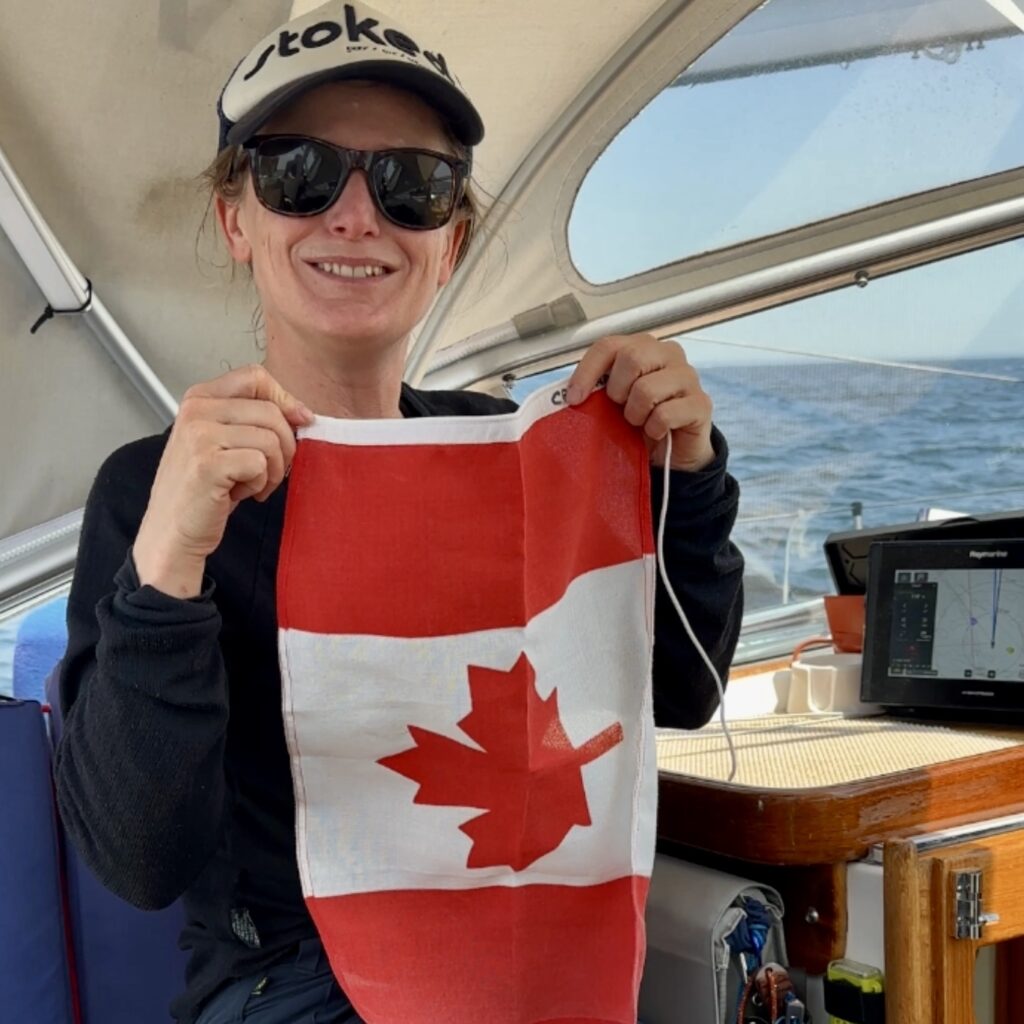
Despite good wind for sailing, the passage across was a little unpleasant for most of the time. The sails were nicley set, but the Atlantic swells were big and made it difficult to relax, sleep and make coffee and food. As we arrived to the Southern end of Nova Scotia and nightfall was approaching we were still in big 2-3M swells on the beam, but then the wind unexpectedly died out leaving the boat rolling wildly in the swell, and we would soon be drifting backwards in the current. As we had seen a few big fishing floats in the area we decided that motoring all the way to Lunenburg during the night was going to be too risky and with no wind we decided to head for shelter before proceeding to the closer port of entry in Shelburne. We are happy sailing at night when there is fishing gear in the water but not motoring as the risk of entanglement around the propellar is too great and with no wind, a disbled engine close to a rocky shore can quickly turn into a life thretening disaster.
On the passage across we had some frustrating problems with our onboard internet communications, either loosing connection or loosing power for no immediately apparent reason. We had tried to get a PredictWind forecast update when the wind died and that had failed after numerous attempts. As we headed into the bay to anchor at 4am we then discovered there was no mobile coverage and starlink refused to reconnect after having been turned to offshore mode – so we had little choice other than to postpone the intended border call until we had had some much needed rest and food, and could investigate the issue properly.
We woke around noon, restarted all the onboard systems and headed out of the bay towards Shelburne so we could check in properly. Just as we cleared the mouth of the bay our communications came back to life.
Swallowing a bitter pill on arrival in Canada.
We quickly learned however, that the border policies have become quite strictly enforced since we had arrived previously in the fall. Once our communications were restored we received several missed call messages and voicemails. We called back to notify our arrival and advised that we were heading directley for Shelburne. Shortly after arrival at the dock two rather unpleasant officers boarded the boat and started to interrogate us, one in particular was extremely rude towards Sarah. Anyway, long story short our boat was impounded (for anchoring before reporting our arrival) and we had to pay a significant fine for its release. This was all despite our plea that we had only anchored in a remote harbour for safety, had not been ashore or contacted anyone, had attempted to call but had been unable to do so, and had called as soon as we managed to establish a phone connection.
A few days later we experienced a complete power loss to the boats communications power circuit. Our 4/5G router, Iridium Go, wired and wireless networks, network storage and services are all on this bus and with a little diagnostics we discovered the negative power supply cable had become disconnected, so now we know the cause of our intermittent communication problems.
Shelburne – A town that looks a little like the wild west
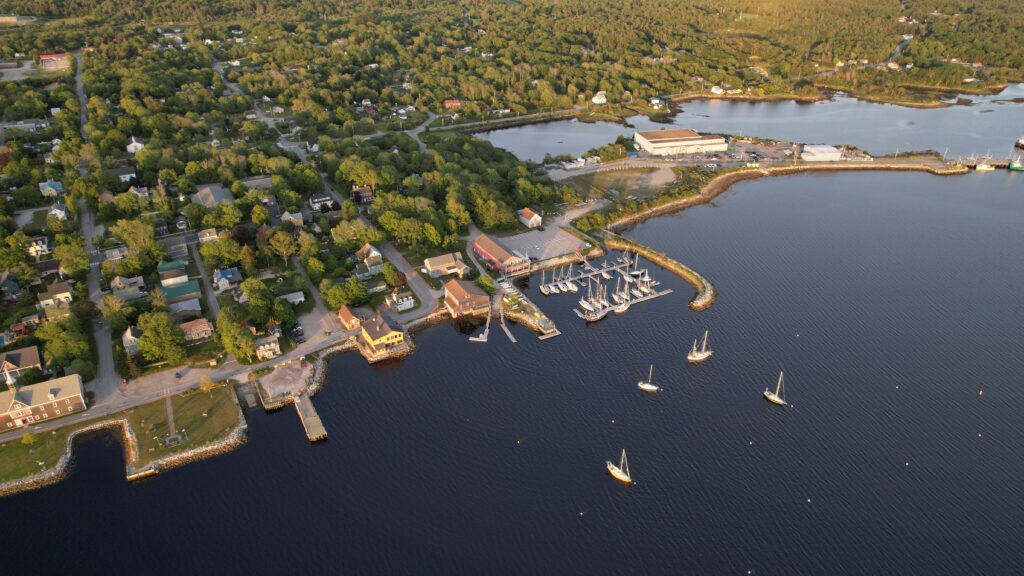
For a moment we considered checking straight out of Canada again and heading directly to the Azores or Greenland, but we shook off the unpleasantness of our arrival knowing that the majority of Canadians would make us feel very welcome in their beautiful country. We decided to have a look around town – and what a cute place this is. In hindsight we are very glad that we detoured to here.
The waterfront street in Shelburne has been used for several movies and all the well-kept historic houses are extremely cute. They have also kept the old street lamps, so it looks like you have walked back in time.
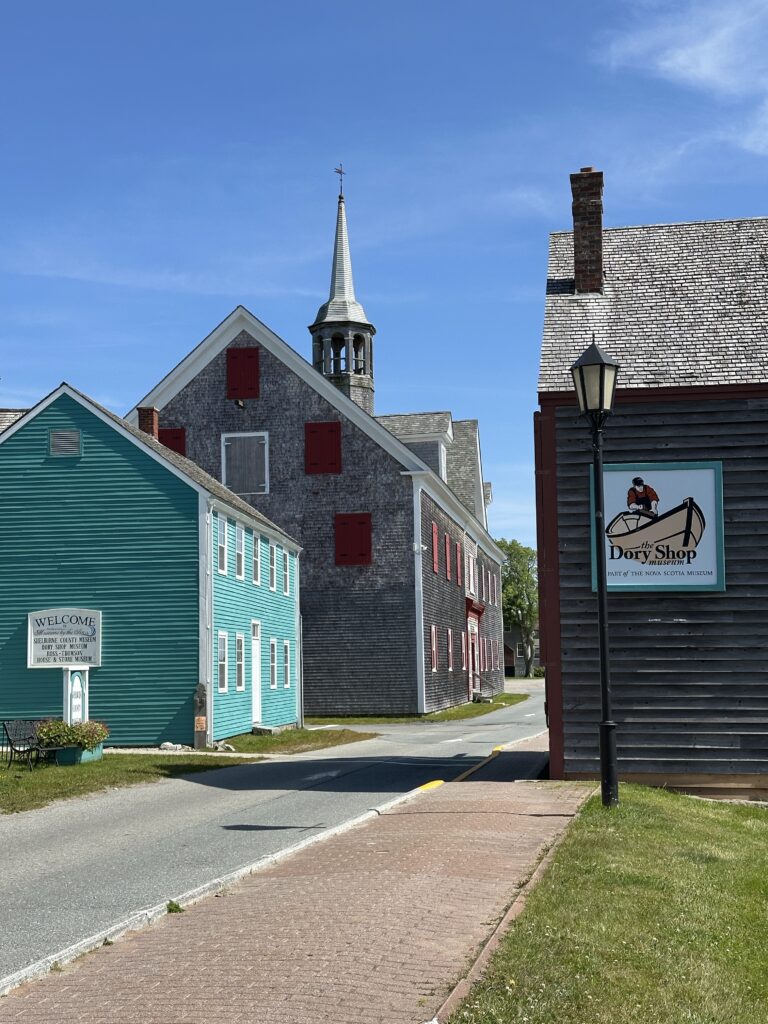
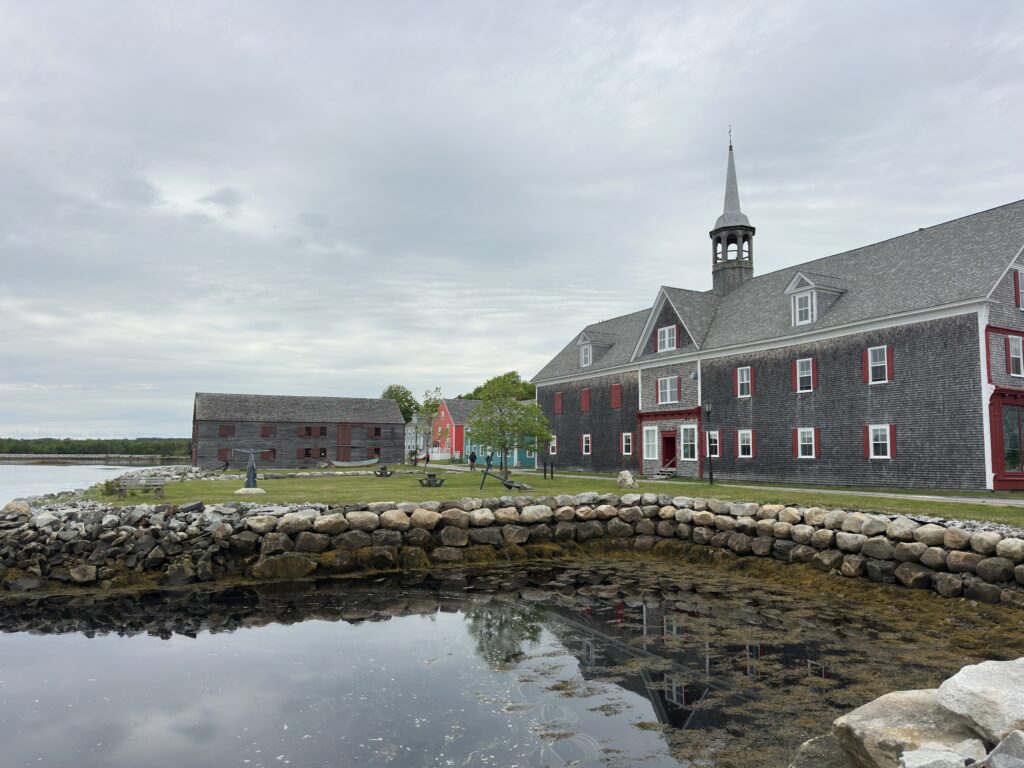
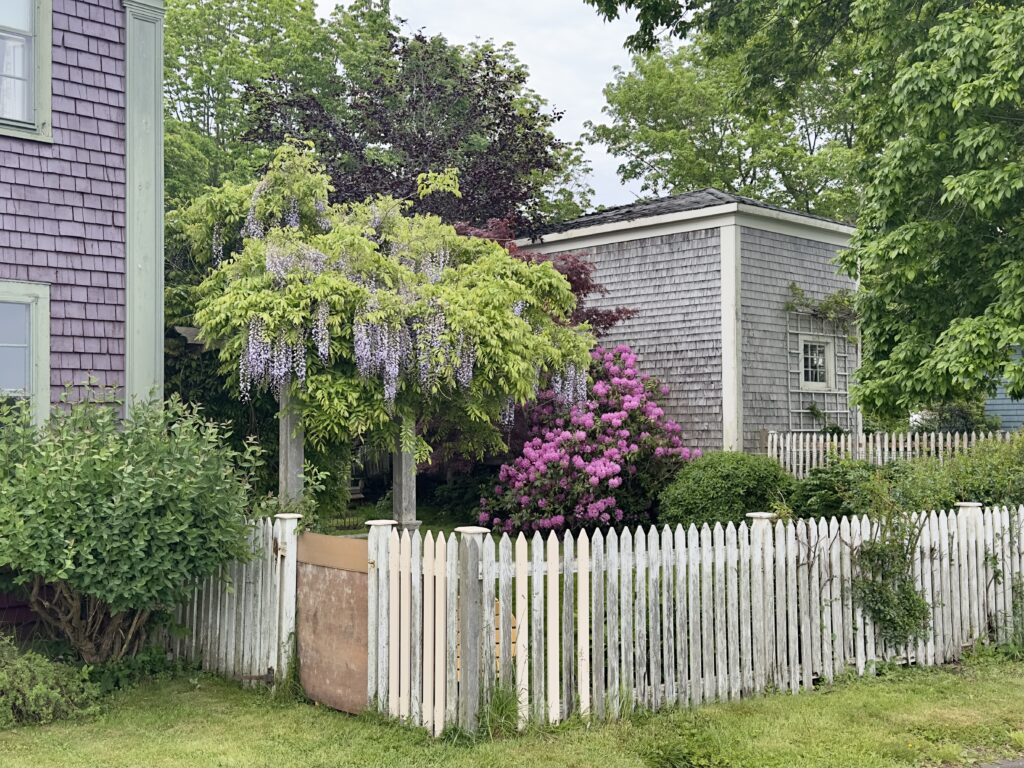
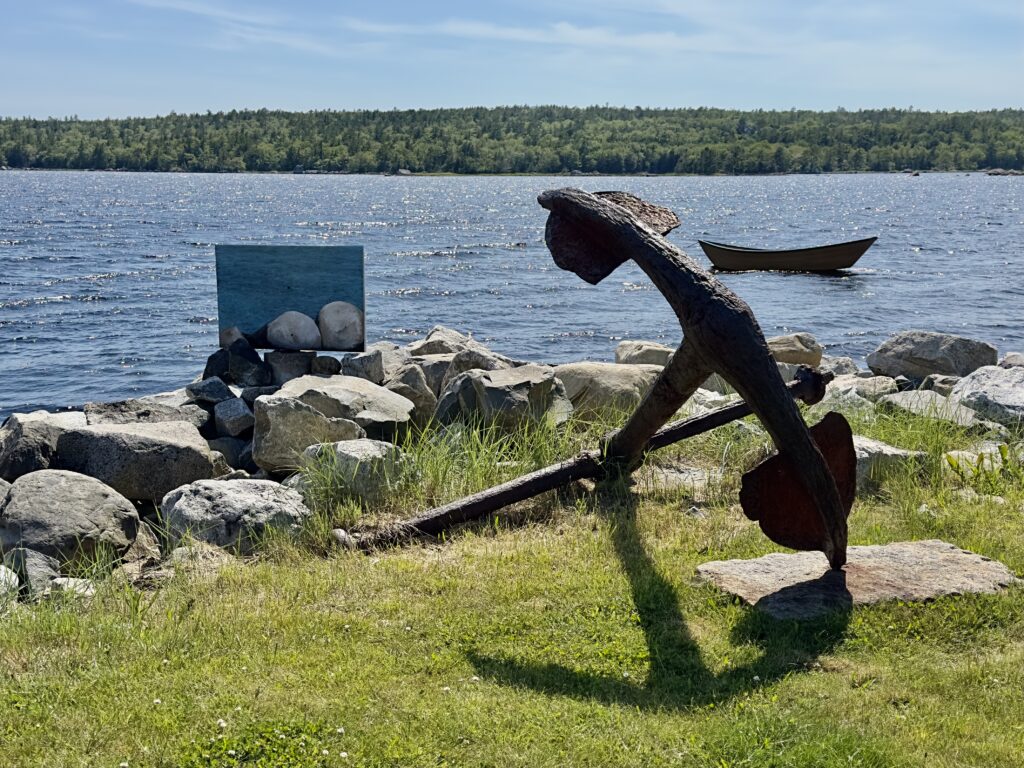
We were joined by a few other cruising boats in the marina and it was nice chatting with other long time sailors again. There’s something special about sharing the joys and challenges of full-time boat life with others who are truly – in the same boat
Everyone we met in town was welcoming and friendly and Sarah was especially surprised at meeting a Danish jewellery designer.
We had a very delicious meal at the must visit Charlotte Lane with fellow OCC boat Trance, and the following day walked to the local supermarket to pick up some supplies.
A detour to the LaHave bakery
As we were heading for Lunenburg, Steve was studying the chart and spotted that there was a bakery marked on the river at LaHave. He looked it up in the cruising guides and saw that the LaHave bakery had its own dock, which seemed like an open invitation to make a quick stop for the night.

It was definately worth it as old fish processing building houses both a bakery, a local craft store and a cute book shop. It also has a skateboard park on the third floor!
In the small town there is also a very talented couple at Westcote Bell Pottery and Artworks who seem to be slowly talking over all the buildings with their beautiful ceramic creations. We really wanted one of their whales, but it is hard to keep on a boat. There are also several small galleries in the area.
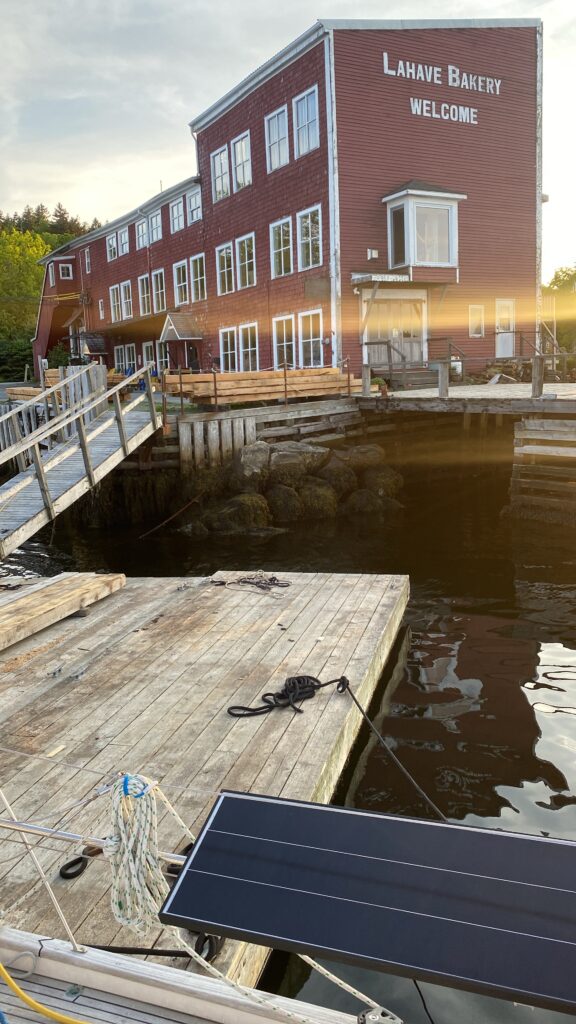
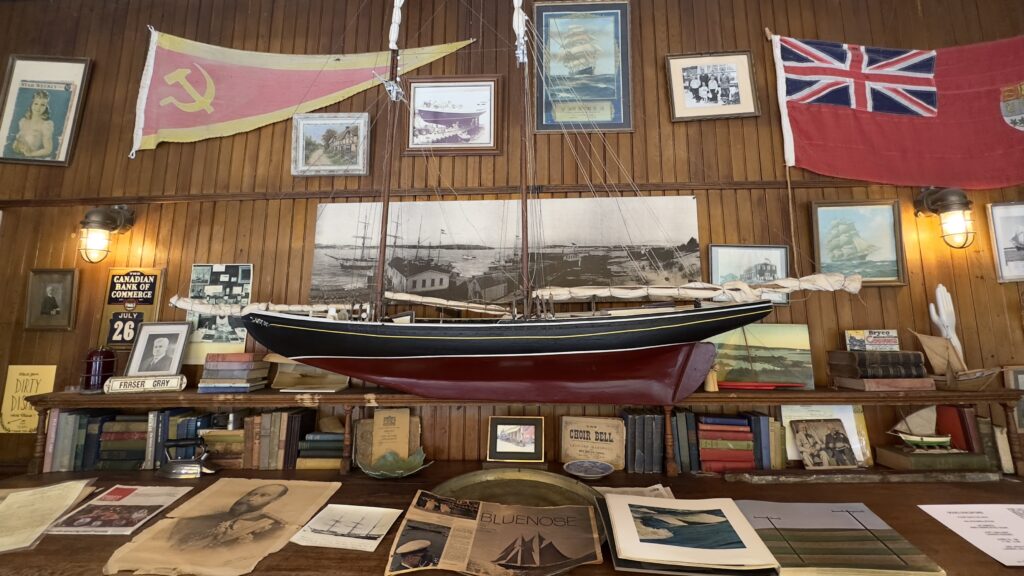
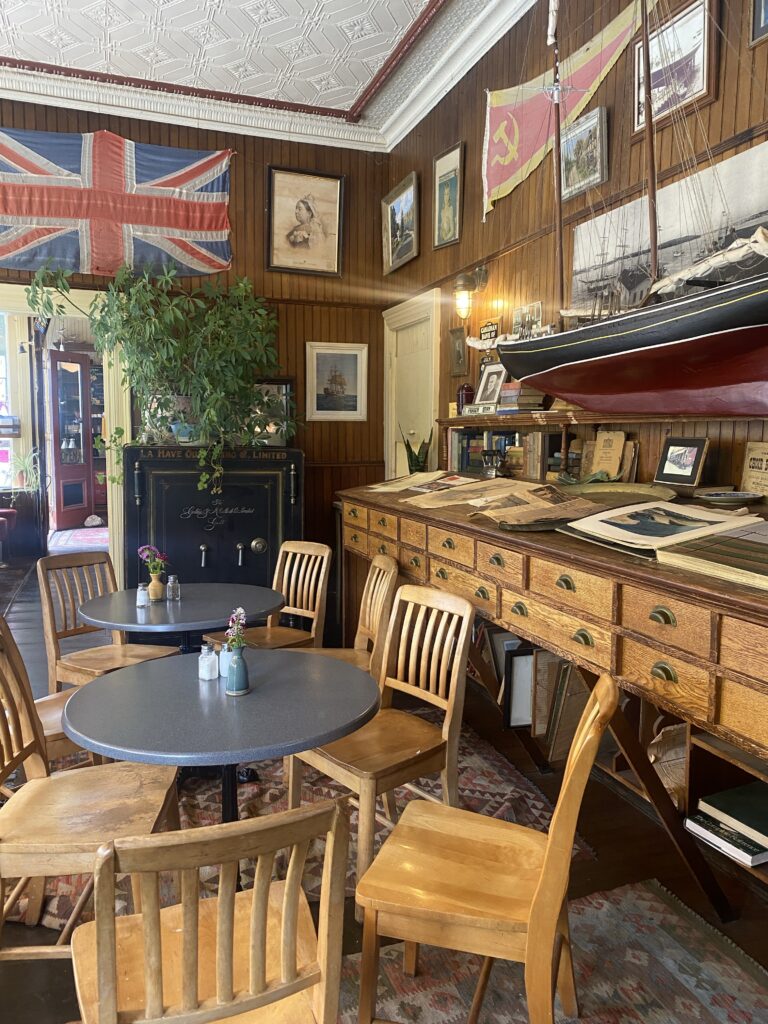
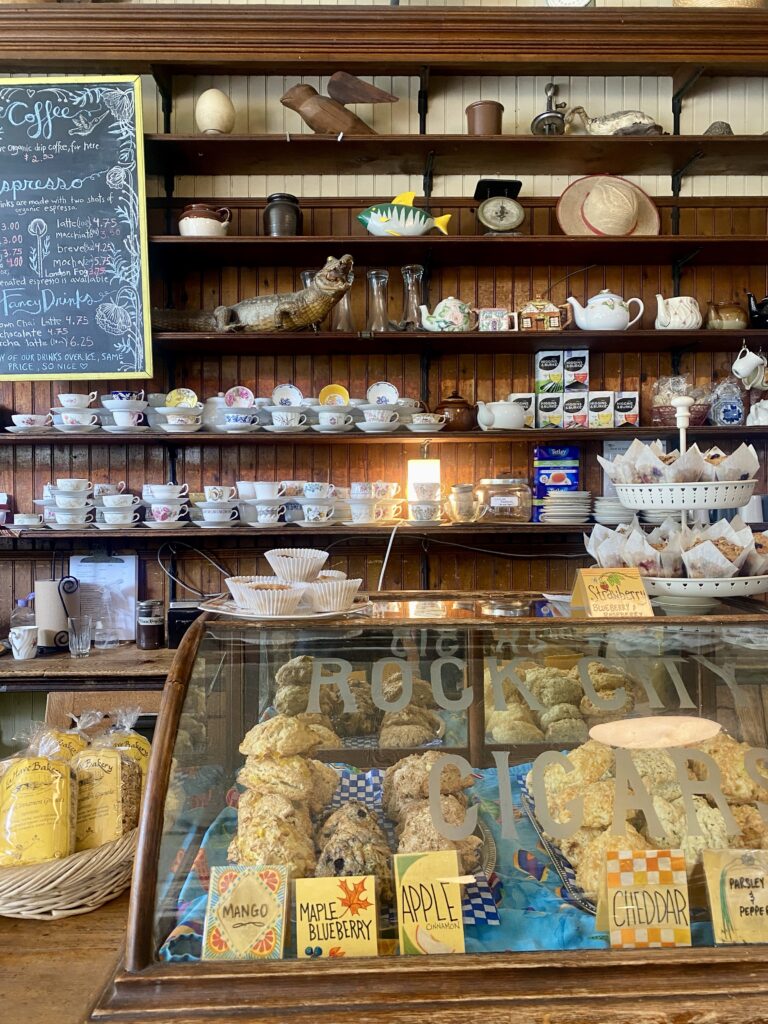
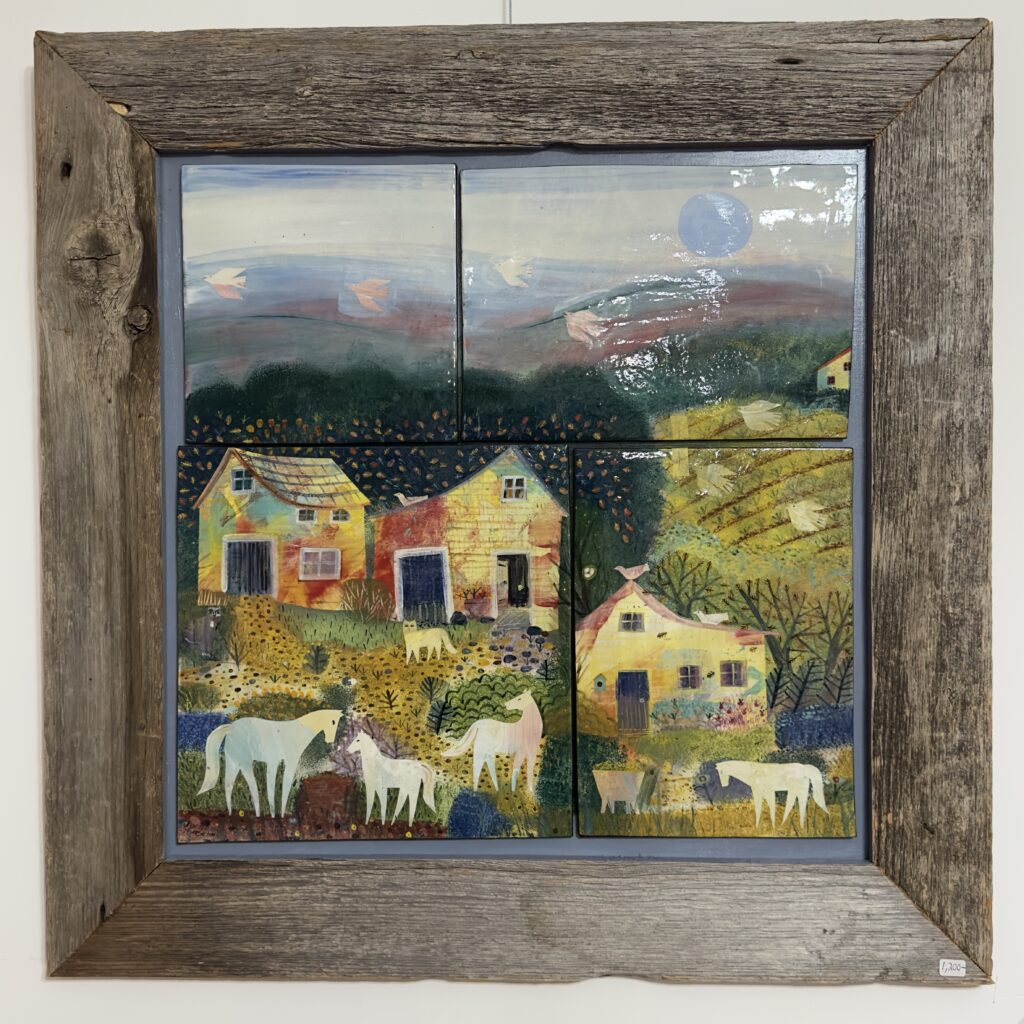
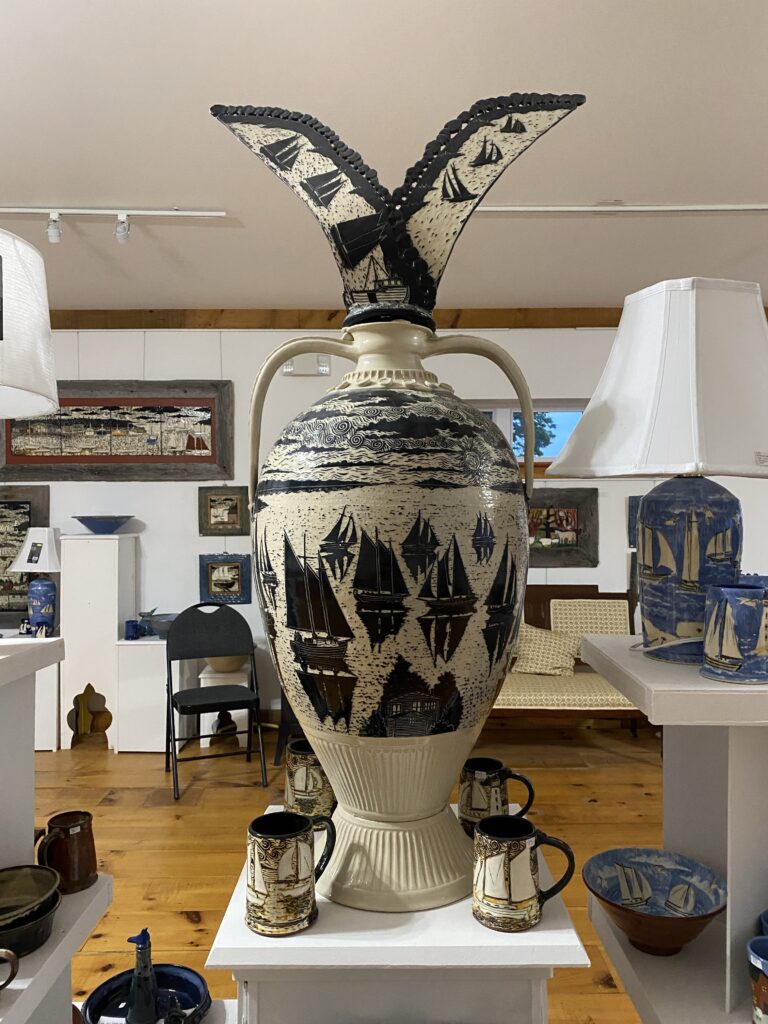
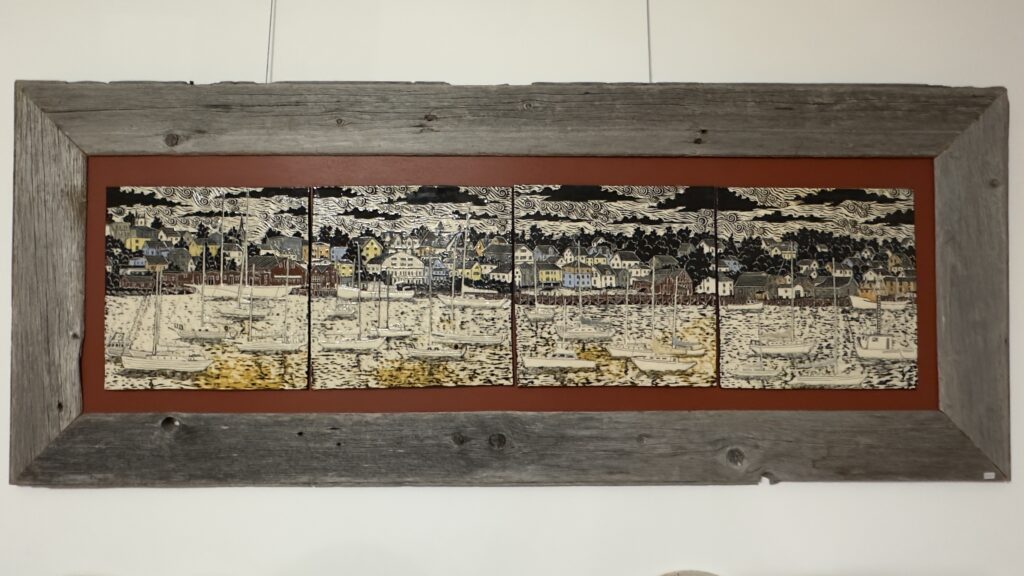
UNESCO town of Lunenburg
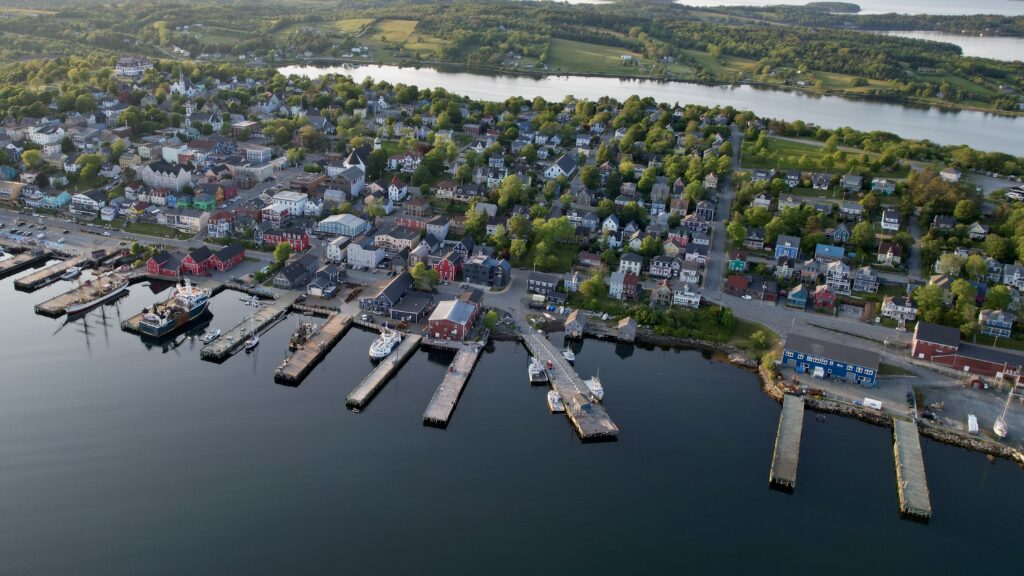
We continued on to our original destination, Lunenburg. We had planned on going there on the way south, but we had been pushed for time with winter fast approaching. We were very happy to experience it in summertime as the colourful town should really be seen in sunlight.
Lunenburg is a UNESCO World Heritage site as it represents an outstanding example of planned colonial settlement by the British and maintains the layout and much of the historical folk architecture in buildings dating from the 1800s.
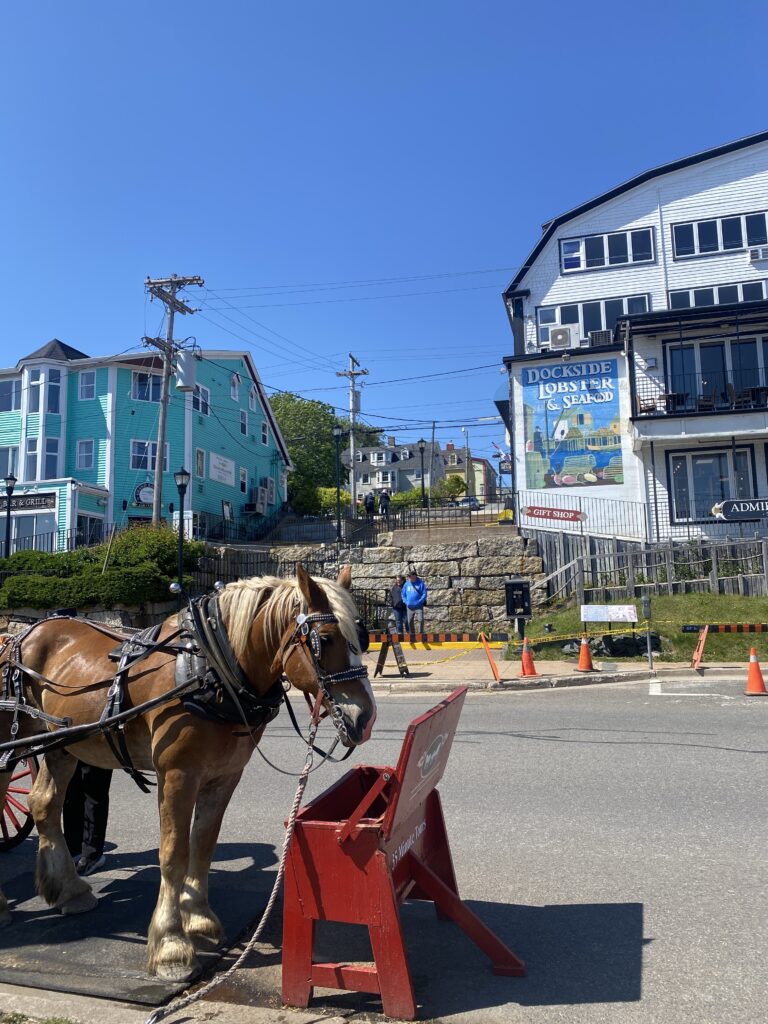
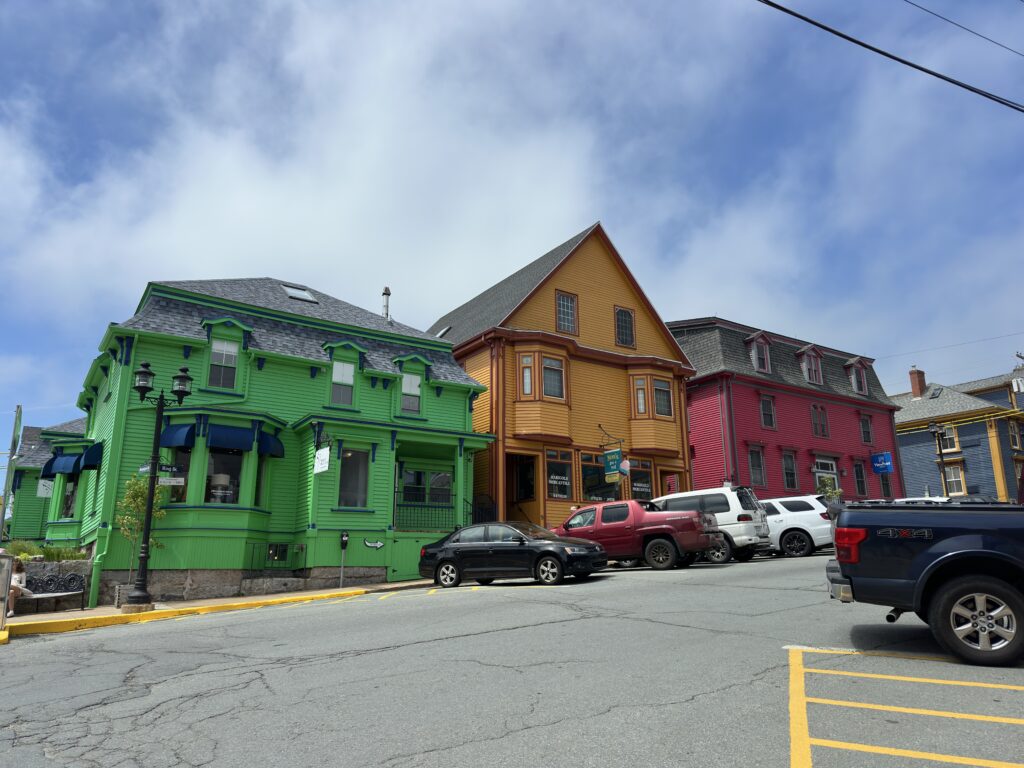
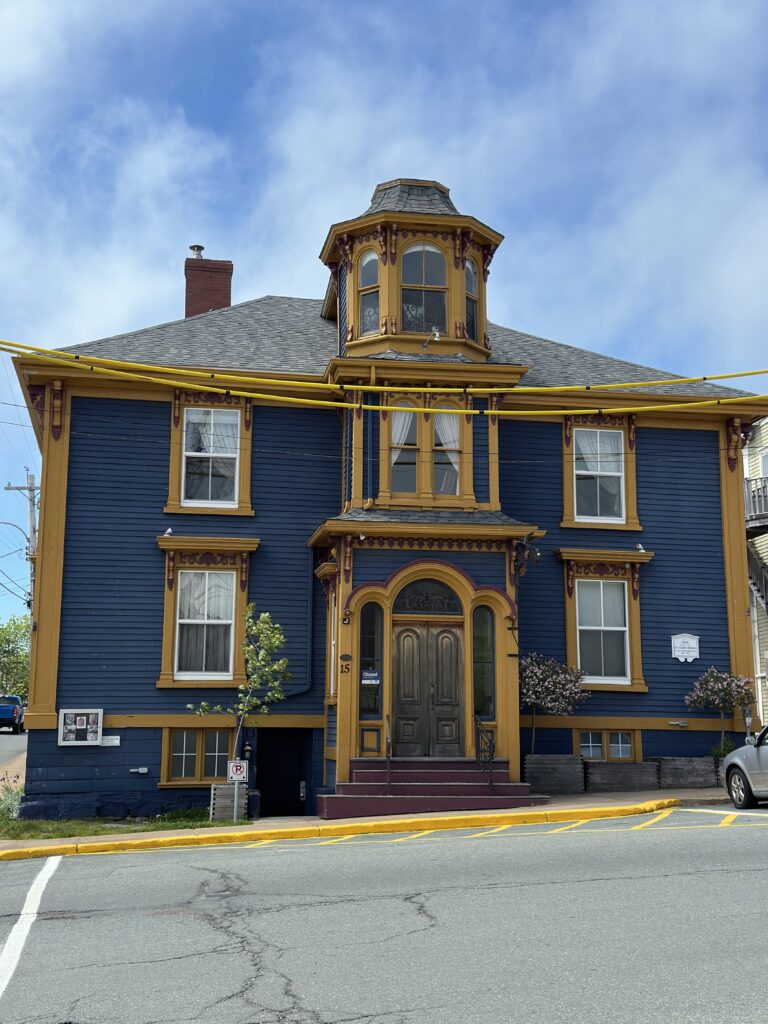
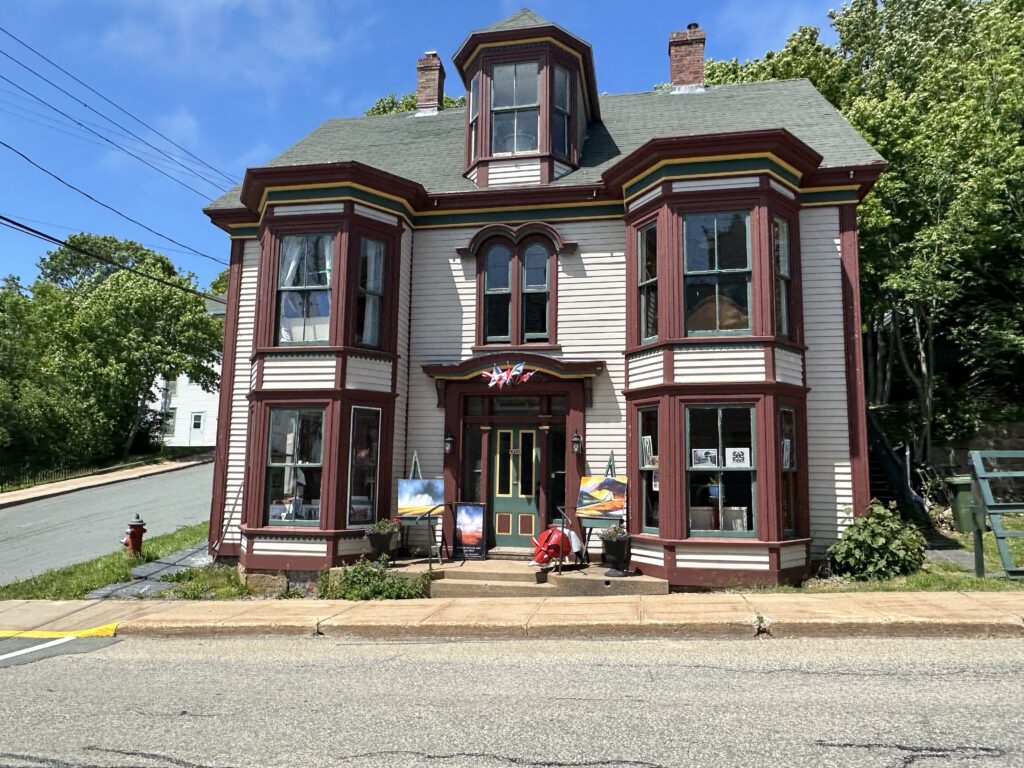
On the first night we went along to a the Big Boat Shed where there was a keel laying ceremony recognising the completion of the laying down of a new wooden boat.
There is lots to see here and plenty of restaurants and bars. One of our favourites was the Shipwright Brewing Company where on a couple of nights a week they have a live band playing.
The old iconic St. John’s Anglican Church is really worth a visit. It is actually not very old anymore as a fire in 2001 caused significant damage to the original building from 1753. It was rebuild in 2005 as an exact replica of the old church and walking into it is a huge surprise. Outside it is white and delicate, but when you walk inside it is wooden and warm. Underneath the church there is a viewing window where you can see into the crypt below, which is a little spooky.

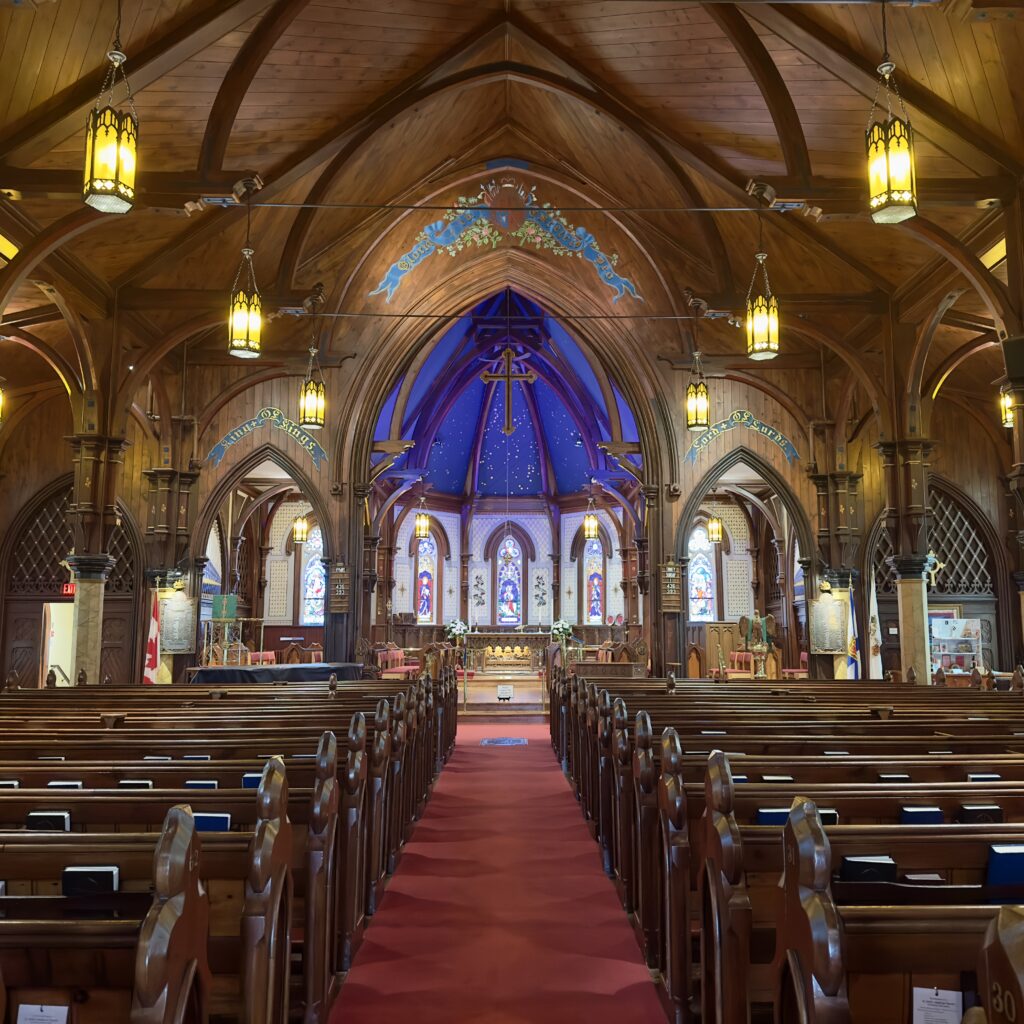
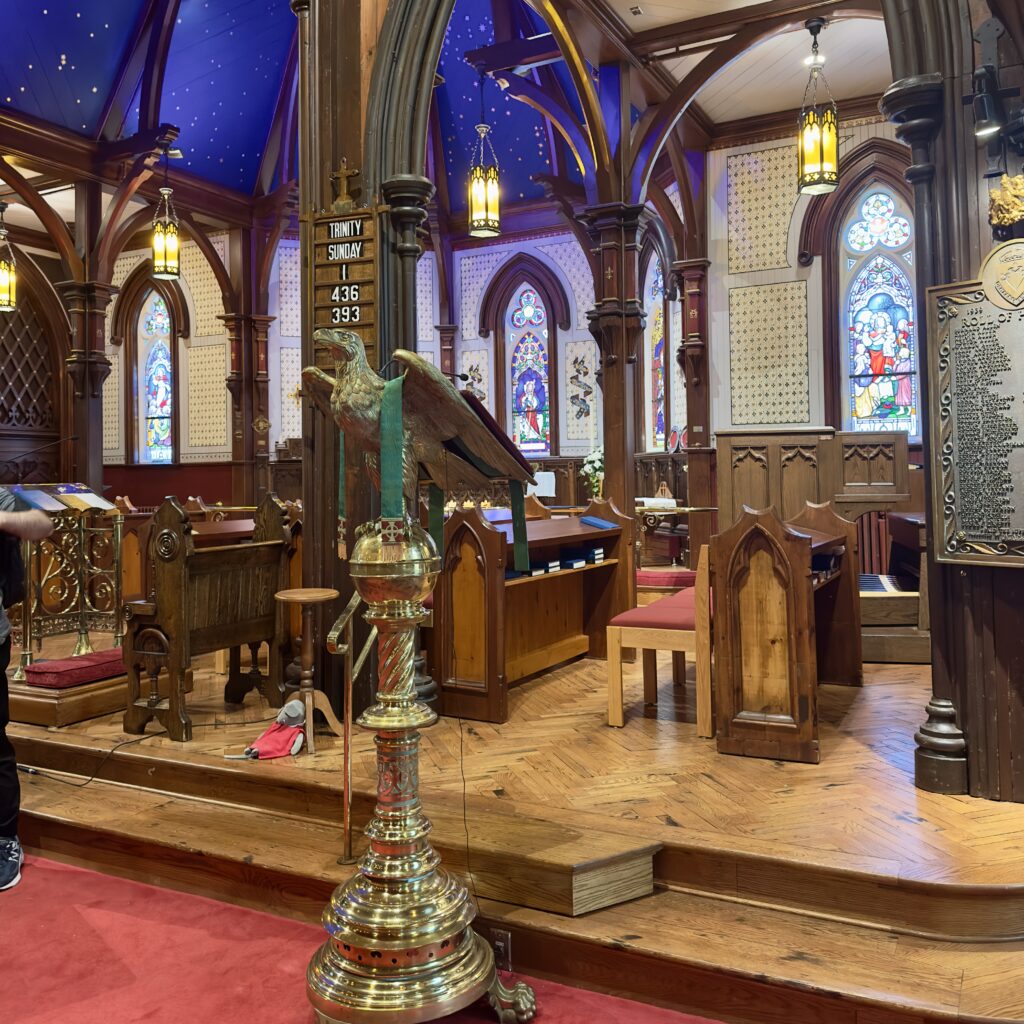
We were lucky to spend some days with the friendly crew from The Black Sprayhood, who have been cruising for 4 years on their boat and who are also heading back to UK but via the Azores.
Heading into Bras D’Or Lakes
Our dilemma when arriving to Nova Scotia had been: should we go directly from Halifax to Newfoundland to avoid another lobster season. This would probably mean that we had to cruise the east coast of Newfoundland again. Or should we go to Bras D’or lakes, then we could explore the west coast of Newfoundland. We had another look at the lobster dates and found that the season had just ended north of Halifax!

With no traps north of Halifax the decision was easy – we’d headed for Bras D’Or, which is known as Canada’s biggest inland sea and is designated as a UNESCO Biosphere region due to its tidal estuary/river/lake system that forms a deep inland brackish sea. And was rumoured to be beautiful.
As we had already been to Halifax and because the weather was settled, we sailed straight from Lunenburg to the entrance of St Peter’s canal with a short dusk till dawn anchorage at Owls Head Harbour.
It was supposed to be good sailing weather, but winds were lighter than forecast so we ended up motoring or motor sailing most of the way and only came across the occasional lobster trap, that has possibly been forgotten or dragged to a new location and impossible to find by its owner.
As we headed into St Peter’s bay, we again started to see a few pots (as the lobster season was still active there) but while looking ahead to make sure we didn’t get entangled we were suddenly surprised when a North Right Whale suddenly waved its huge fin at us – right in front of the boat! We quickly put the engine astern and just managed to avoid making contact. We suspect that we had probably disturbed its sleep.
The pots were not too hard to navigate, but at night or in fog it would have been difficult as the fishermen do not leave the marked channels free of pots and the long floating lines are terrible in the shallow water.
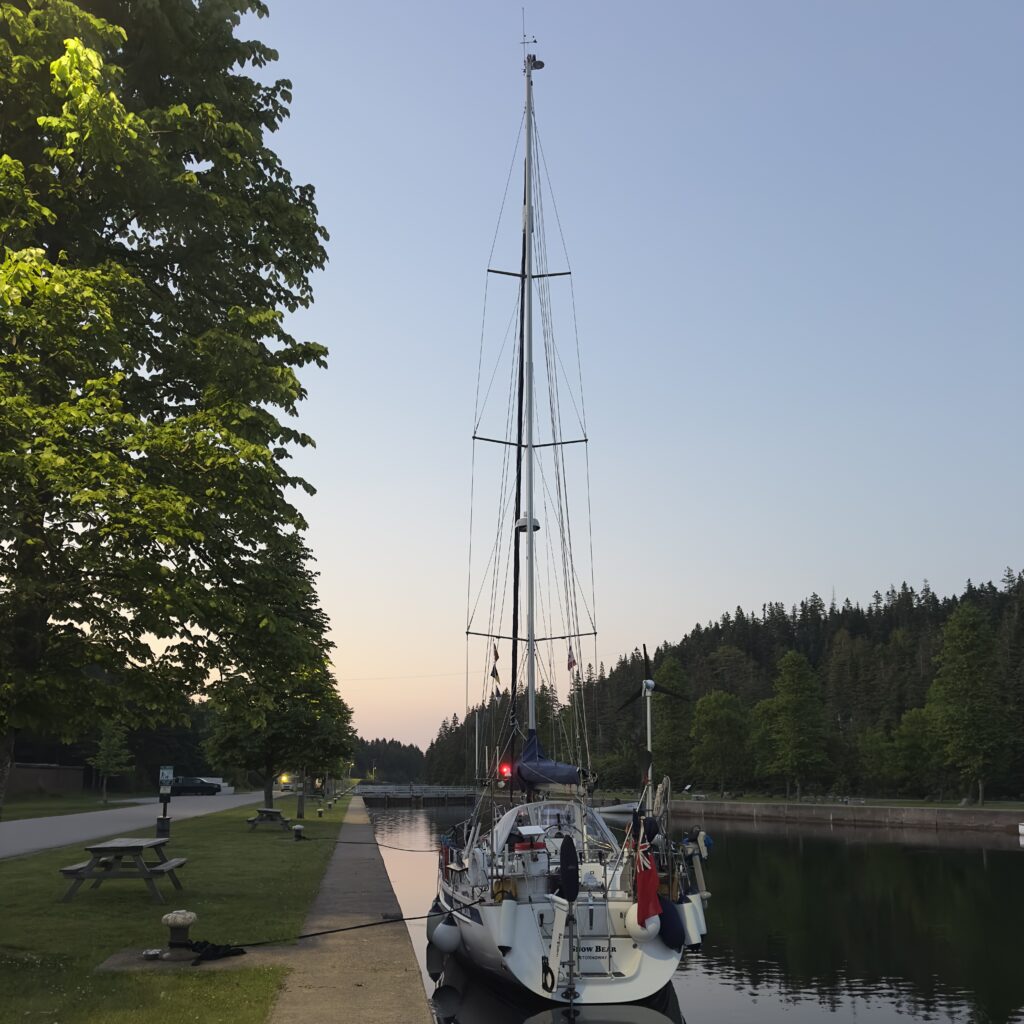
We tied up to the dock in front of the canal lock entrance and spent a relaxing night in perfectly sheltered water.
Fantastic Bras D’Or lakes
The following day it was time to pass through St Peters Canal. Built in 1869, the canal connects the southern end of the Bras d’Or Lakes with the Atlantic Ocean. The canal is only around 800 meters long and was a major engineering challenge in its time – taking 15 years to build.
In most locks, water flows in only one direction, with one side always higher than the other the lock gates are typically close together in a V shape with the point facing upstream. But Bras d’Or Lake is tidal and connects to the Atlantic Ocean at its northern end, through the Great Bras d’Or Channel and because the ocean tide levels are different at the two entrances, the lake is sometimes lower than the ocean, and sometimes it’s higher. As a result, St. Peters Canal is the only one in North America that has double gates at both ends, designed to handle water flowing in either direction. This unique feature sets it apart as both a functional waterway and an impressive piece of engineering history.
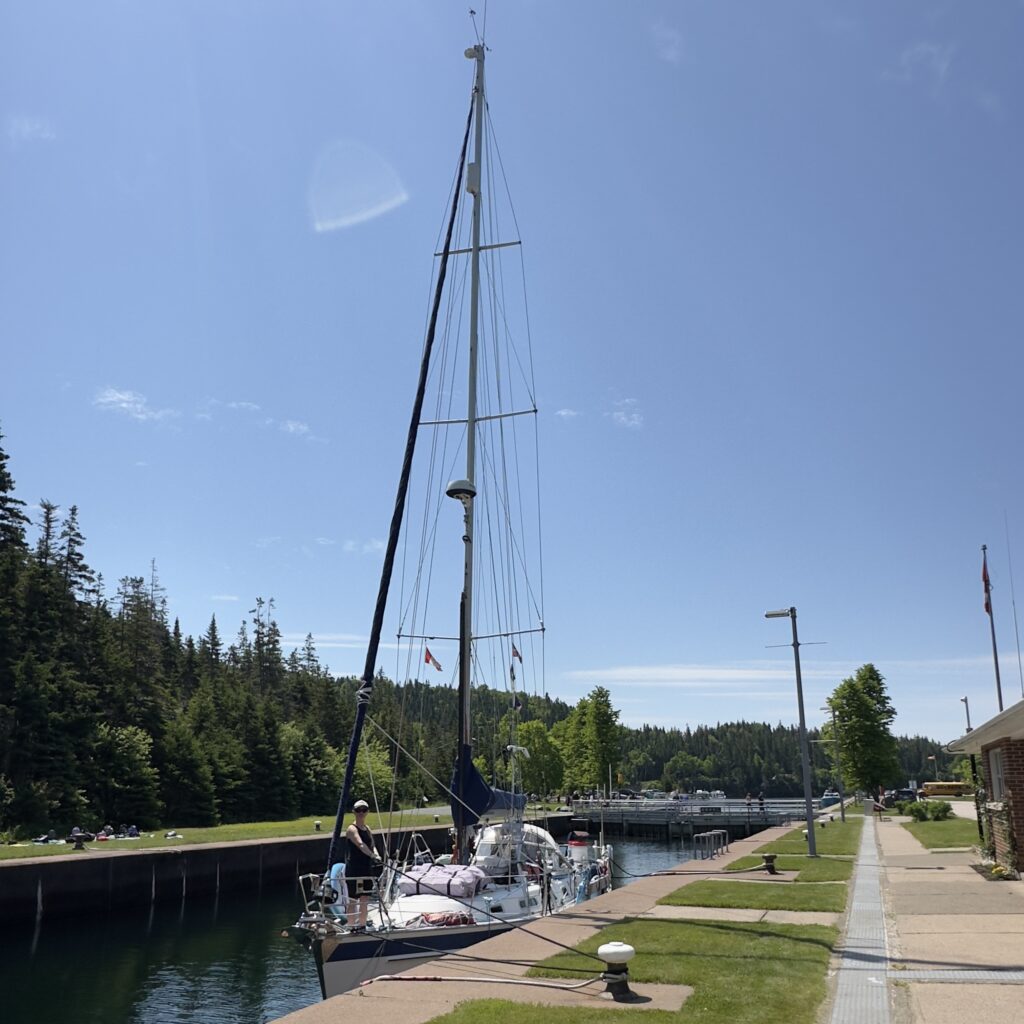
The canal is also crossed by a modern swing bridge, which was upgraded in recent years to accommodate increased road and boat traffic. To ease navigation the bridge is operated by the staff that man the lock.
Sailing is easy here. It tends to be windy but there is no swell, and there are some beautiful secluded places to anchor. The whole bottom appears to be mud so the holding is perfect.
If your mast is lower than 27 meters, then you will not have problems with the overhead cables and you can read more about the restrictions here. The sign at the entrance to the canal just warn you about the electric lines and advice you to look up – we suggested to them that they added height limit to the sign😁
We spend our first night at St Peter’s Marina just a few hundred meters from the canal, and visited the the open mic night at Bras D’Or Lakes Inn, which had great service and very good fish and chips.
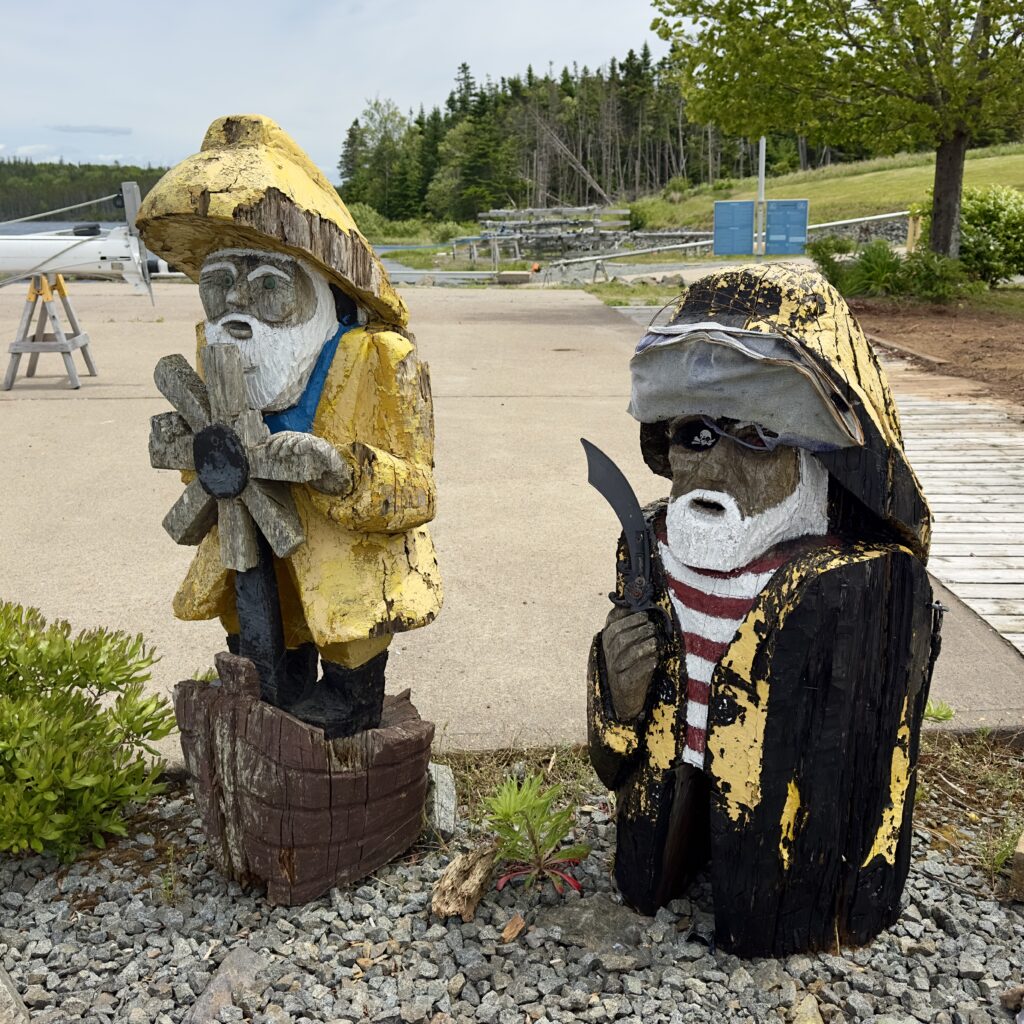
Gerry, the manager of the marina kindly leant us his car to take our propane bottles to the local refilling station and we picked up some supplies from the supermarket.
We also topped up our diesel, gasoline, and water before departing the following day.
A narrow entrance to Johnstown Harbour
Then we headed into the lakes and though we heard it was great, we were amazed at how beautiful it was and headed for Johnstown Harbour.

Because of some steep waves near the shore we were not 100% sure if we could safely enter the narrow entrance, but with a spit of land and a shallow sandy bar before the entrance, we felt quite sure that the waves would soften before we got to the entrance – and luckily we were right. We had carefully plotted a track using the useful pilotage notes in the CCA guide to Nova Scotia. After that it was just follow the track on the plotter closely and suddenly we were in a beautiful calm and well protected anchorage. The mud bottom meant the anchor set as soon as it was on the seabed. It was great to go for a paddle in the flat water while we could see the waves knocking on the shoal and shoreline nearby.
The following day we passed through the Barra Strait Bridges, the first is a railway bridge that is now permanently open. There are no longer any active Railways in Nova Scotia. The second lift bridge opens on request. There is a little bit of tidal current here so plan your passage accordingly.
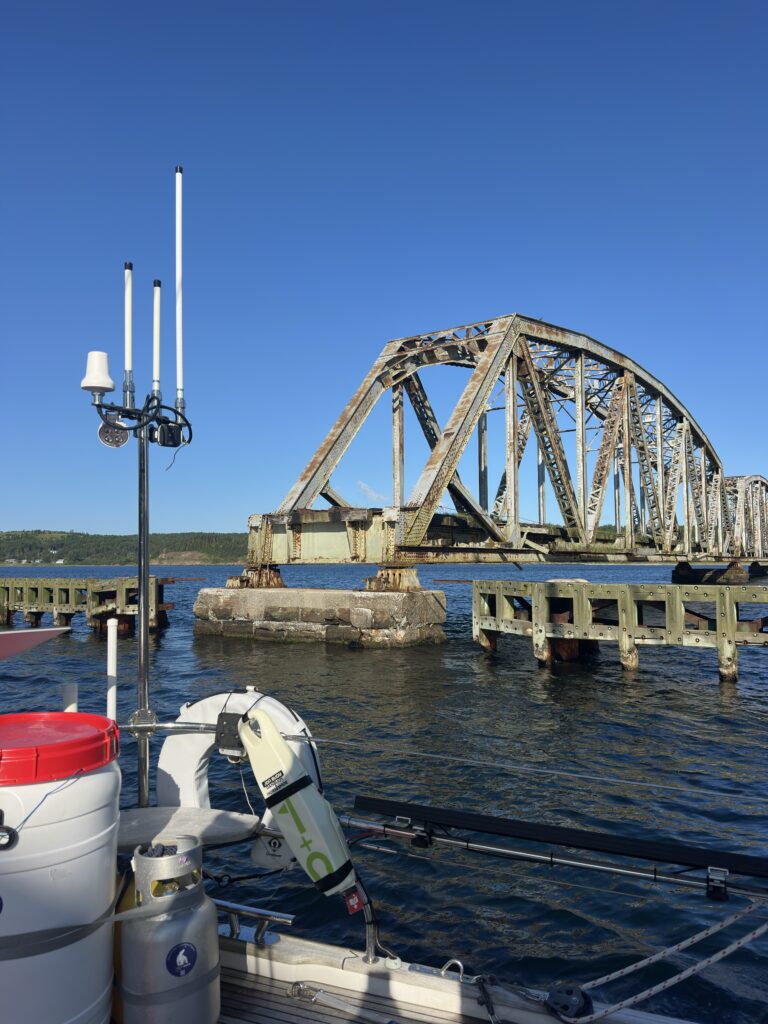
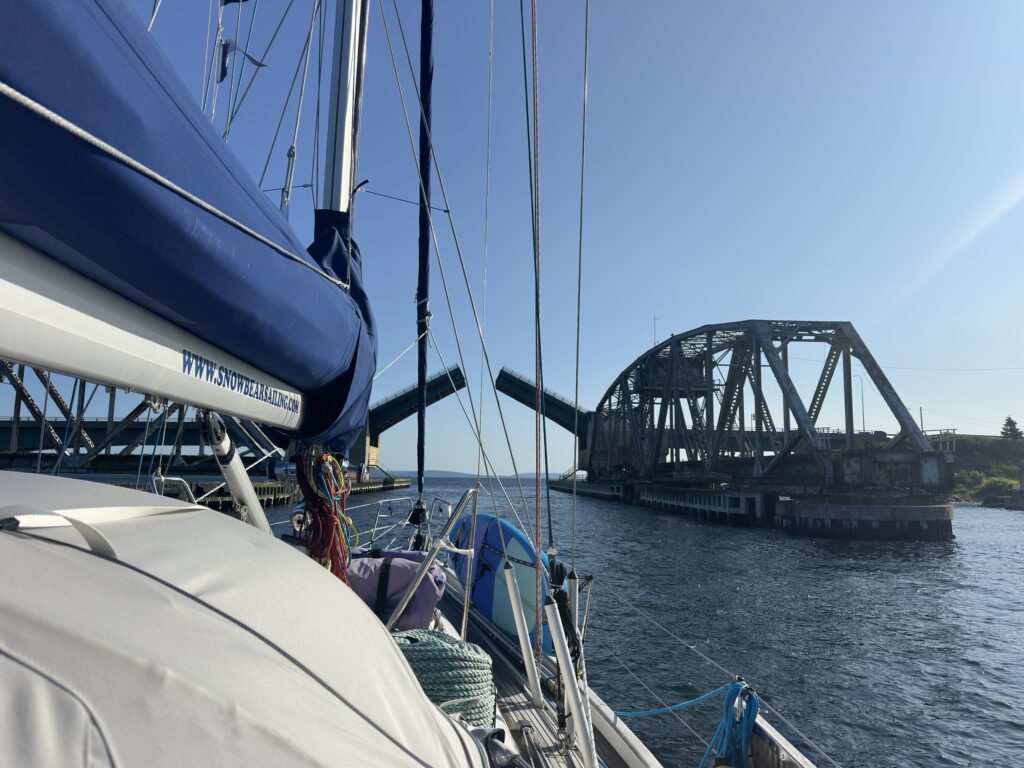
Maskells Harbour – birthplace of the CCA
We headed into another spectacular anchorage at Maskells harbour, know previously as Boulaceet where in 1919 anchored aboard the yawl Elsie, Gilbert Grosvenor, William Washburn Nutting, and Captain Morgan discussed the idea of forming a partner organisation to the Royal Cruising Club that later resulted in the formation of the Cruising Club of America. (CCA)
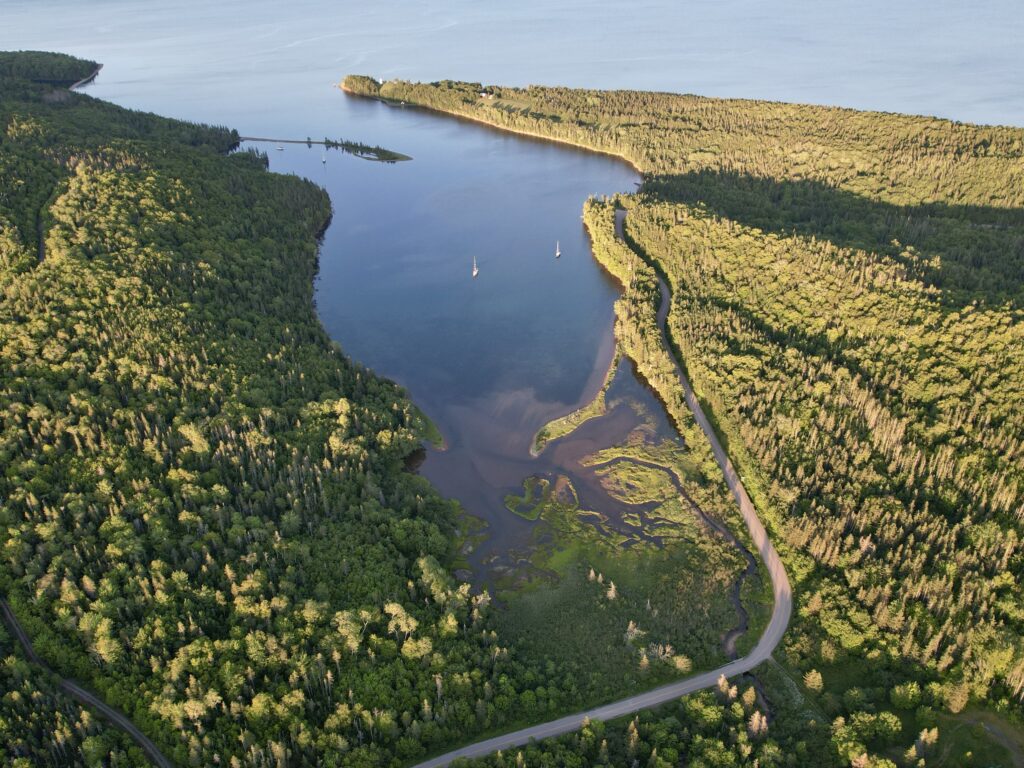
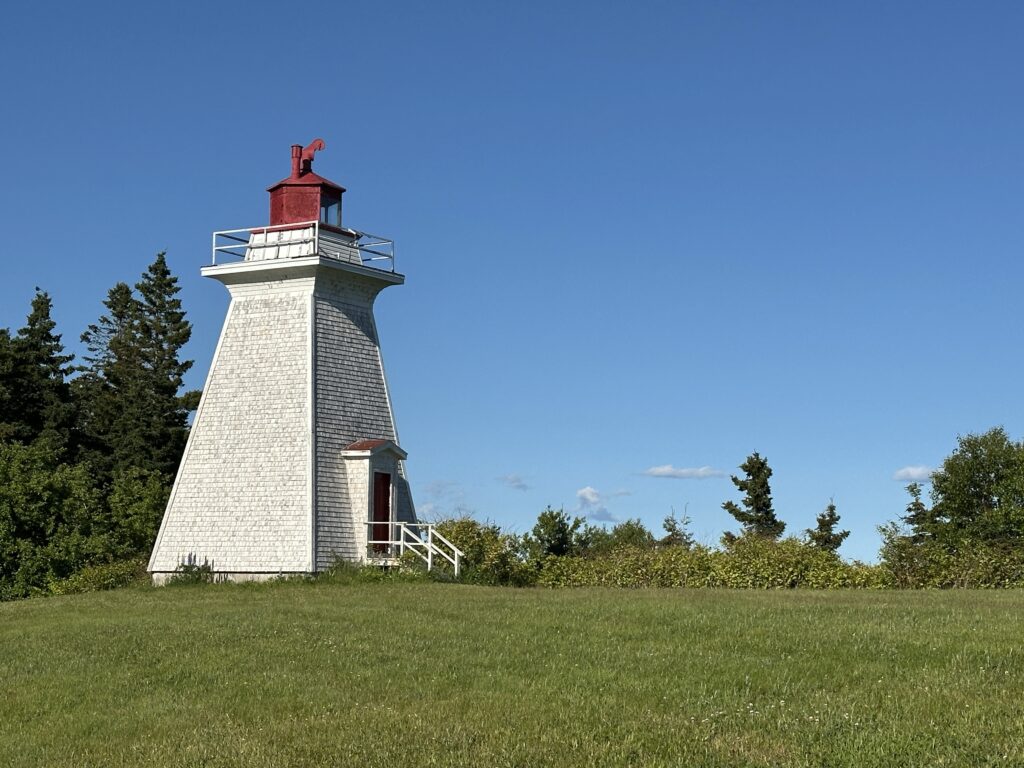
For us, over a hundred years later, it was simply time to enjoy some sunshine with water just warm enough for a swim
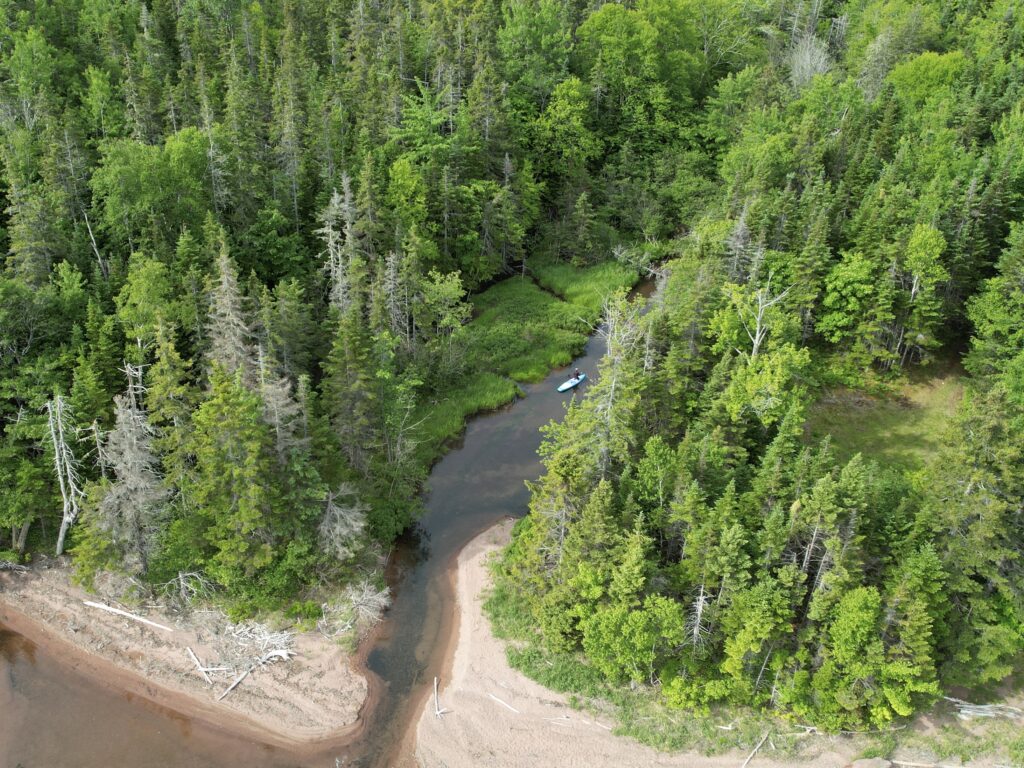
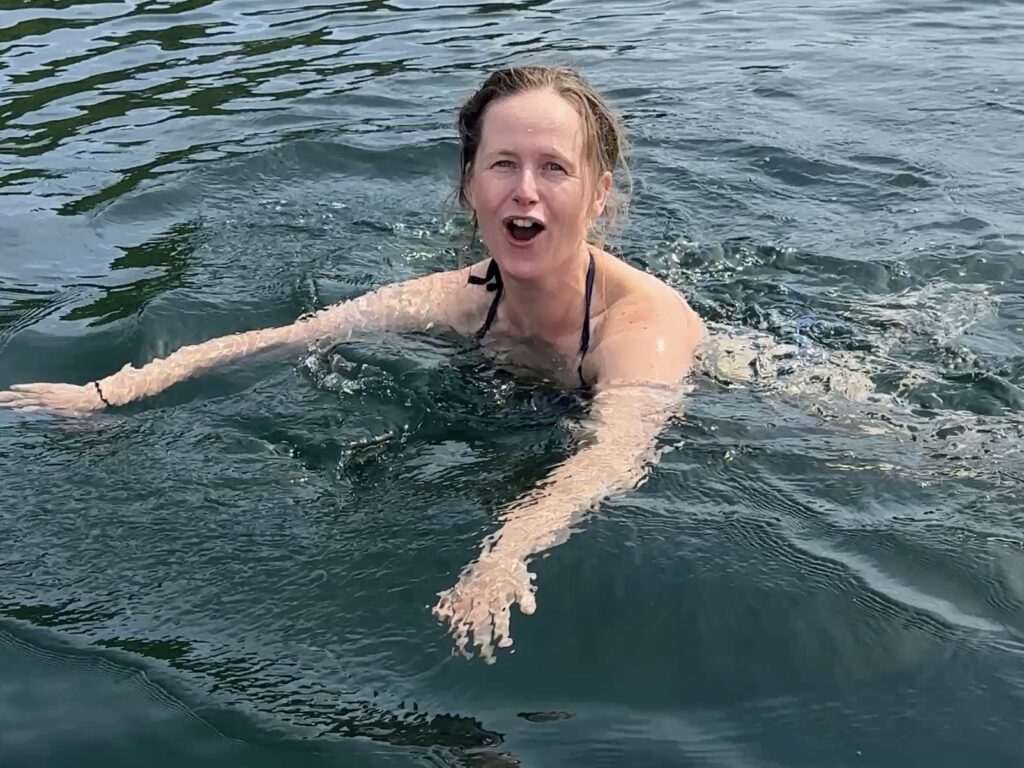
Two nights in Baddeck
The next day we headed for the capital of the lakes, Baddeck and didn’t know what to expect as the reviews of the harbour staff were not great in the waterways guide. We found them friendly and ready to help with lines, but we were surprised that they charged $10 for taking on water in addition to a mooring and electricity fees. Its not often we experience that. So if you don’t need to stock up on food or fill up the water tank, you might want to save the money and just anchor in the area next to the dock.
Baddeck was once the summer home for Alexander Graham Bell, the inventor of the telephone and its a popular destination for sailors and tourists visiting this area. We had a fantastic meal at The Cable room at the Telegraph House Hotel. Everything is homemade from local suppliers and the atmosphere was like stepping back in time to the 1800s and it wouldn’t have felt inappropriate to come wearing a top-hat. The Telegraph House Hotel is where Bell stayed when he first visited the area and the room he stayed in has been preserved the same as it was when he stayed.
We also had a beer at the local Canadian Legion (which is a bar and club for veterans), where a local music festival was on. It was an interesting experience – both the bands were great, but the first band was talking and laughing so loud during the other band’s concert, that they were taking all the focus and guest moved away their corner and one woman had to calm down her husband from going up and telling them off. But they didn’t seem to notice the tension they created. Then the other band seemed to get back at them, when they invited them to jam with them to a song that they clearly couldn’t join in on. So they were on stage not knowing what to do with their instruments.
It was little strange to see the back of the stage adorned with a bazooka rocket launcher and a light machine gun.
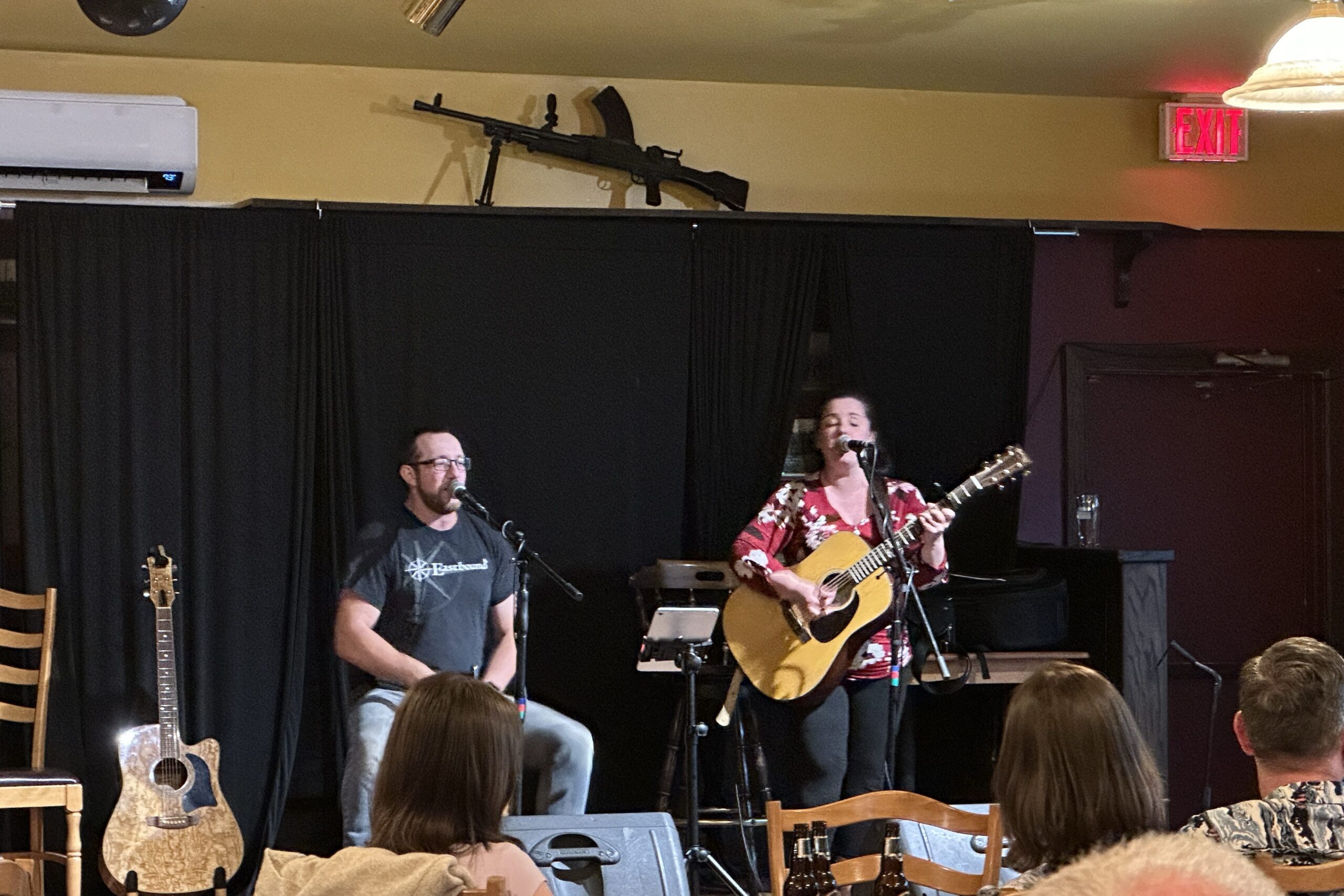
After that weird night we left the dock and headed to a nearby anchorage in Baddeck bay to shelter from some easterly winds that were forecast overnight. Once again it was that lovely mud in which the anchor set as soon as it hit the bottom.
A shallow entrance to Big Harbour
We continued on towards Sydney and knew we had to plan the exit through Great Bras d’Or Channel with strong tidal currents and a narrow passage through Three Fathom Shoals. So we initially headed towards the anchorage close to the exit, but then decided to head into Big Harbour – it looked like a beautiful anchorage and the CCA guide book said it was the best in the lakes.
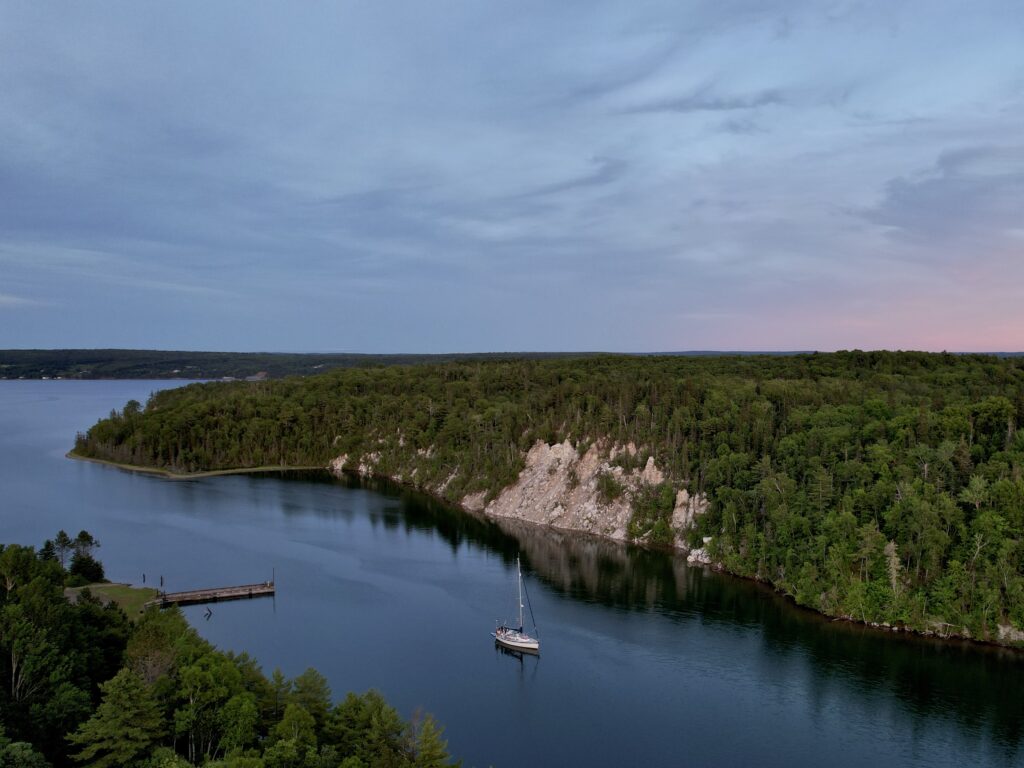
And it was really worth the stop. Steep cliffs and a narrow channel entrance makes it feel cosy and secluded. The area is not well charted and it is not deep, so we didn’t continue into Secret Harbour in the back, but Sarah took her SUP in there and several places she grounded. So be careful if you take the trip further in, but if you have a SUP it really worth a trip.

We use the drone when the water is calm so we can identify shoals and rocks below the surface. In this case it was easy to see just where the deeper channel was at the entrance – that route in involves keeping close to the shore with a couple of sharp turns to stay clear of the shallows in the middle.
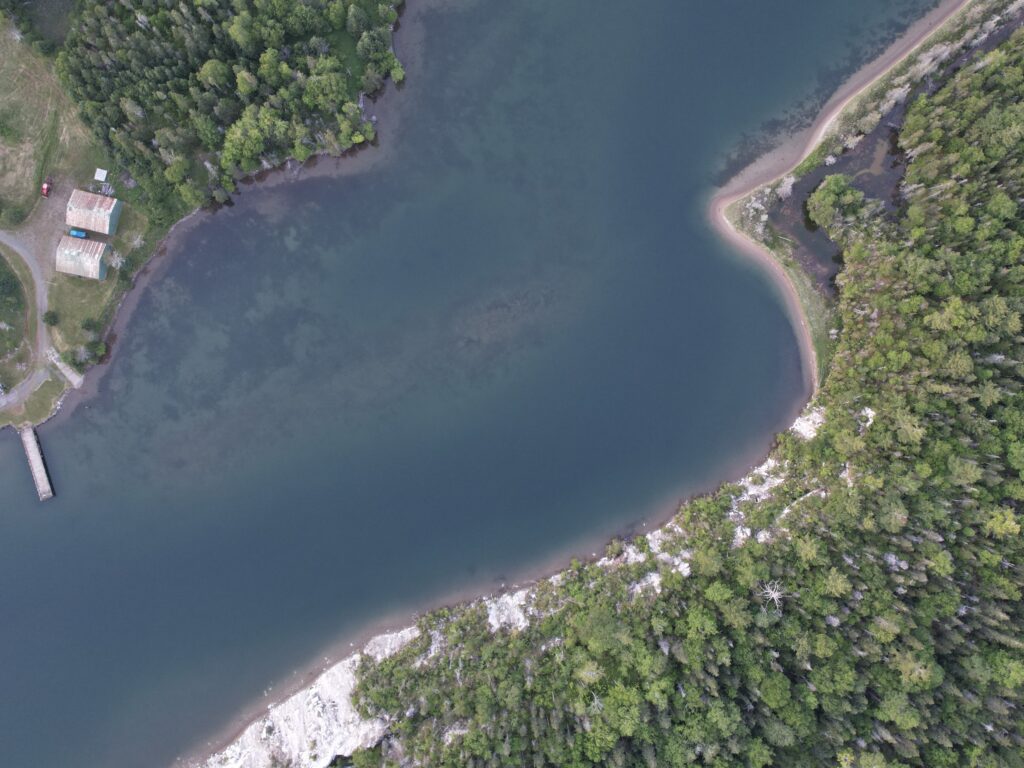

Windy lobster trap trip into Sydney
We had been told, that Sydney was worth a visit, so we found a windless day to motor around the corner and said goodbye to the idyllic anchorages in Bras D’Or lakes.
Ones again we were in lobster trap season and to begin with, we thought the traps were somewhat less frequent or dense here. We were seeing traps as we exited the lakes but nothing in the scale with what we had seen in the southern part of Nova Scotia. But as we headed around the top of Boularderie Island towards Spanish Bay, we once again found ourselves surrounded by hundred of traps and of course the wind decided to do the complete opposite to the forecast and it was suddenly blowing 16 knots making it difficult to see the trap floats in the choppy water. As we rounded one of the channel markers on the approach to Sydney we managed to get briefly entangled. We killed the engine quickly and fortunately after a couple of painfully long minutes, the float and line popped up and we drifted free. We will be so glad to see the back of lobster traps.
Sydney is very much a commercial harbour, with a large coal dock on the approach and one of the widest ships we have seen, The White Marlin is gigantic, more like an island than a ship and its a semi submersible heavy load carrier. On the deck in this picture is an offshore electricity substation belonging to the Danish company Orsted, built in Singapore and destined for the Rhode Island wind farm project.

As well as playing host to big ships, Sydney can boast of being home to the world’s biggest fiddle, which might confuse you if like us, you talk to the port authorities and don’t know this fact! The directions will most likely be park on the floating dock closest to the fiddle!
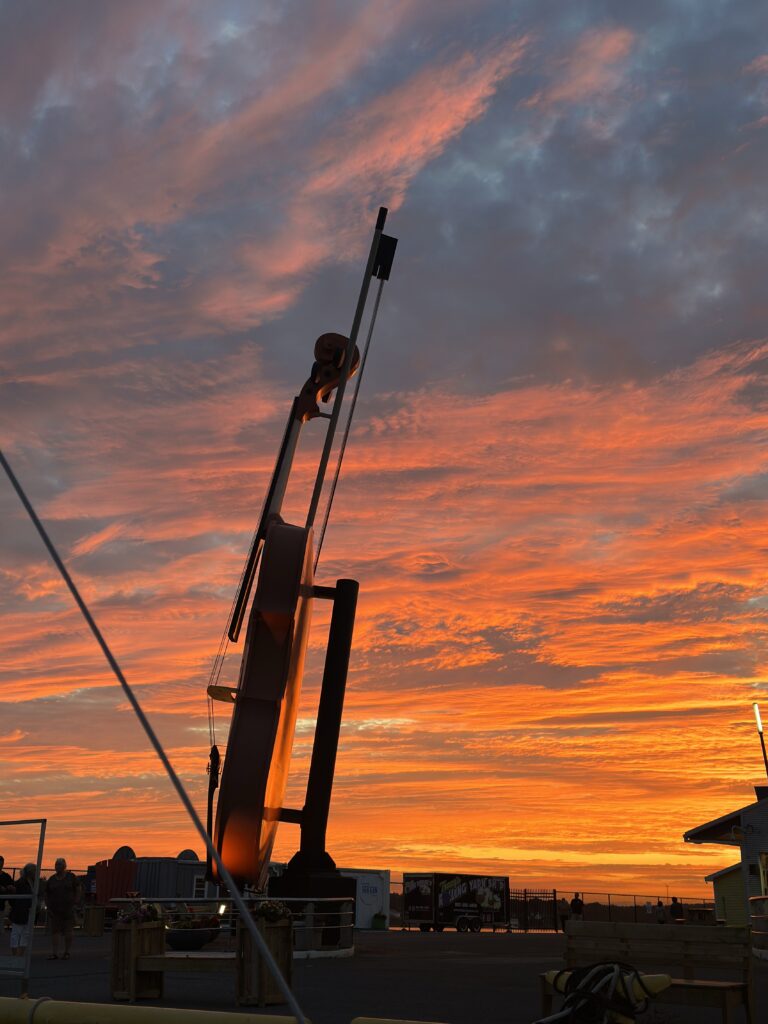
We spend a day in Sydney and must say, that we were a little disappointed, perhaps this was because we arrived on Canada Day. Maybe we expected something special, but almost everywhere in the town was closed and most of the people were at a nearby park where there was lots of entertainment for the children and some live music playing, but refreshments and food were very limited. We did find a very nice cider brewery and bar, and a quite good centre for art and craft, but after all the amazing places we had seen in Nova Scotia we felt that Sydney was a little lacking.
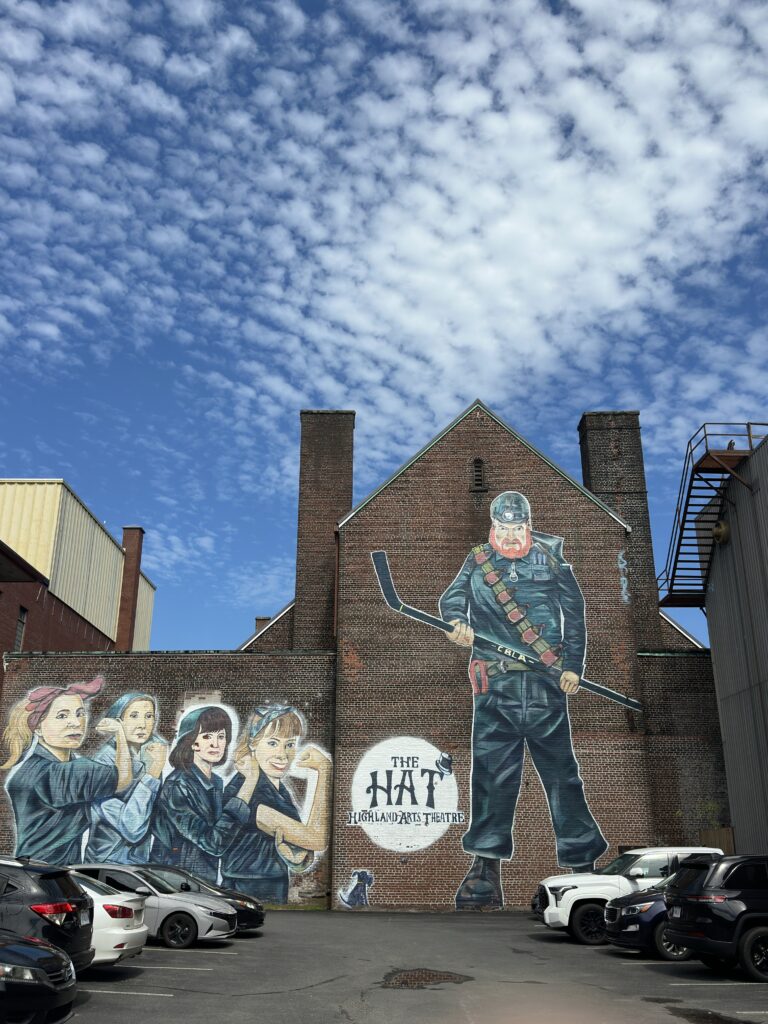
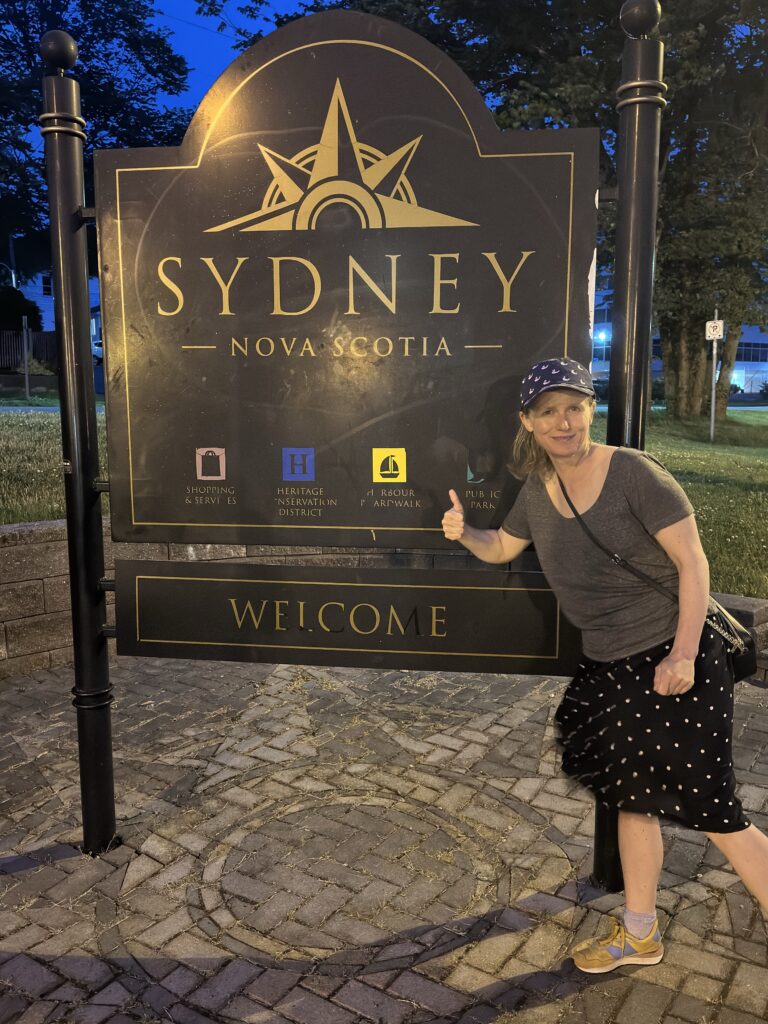
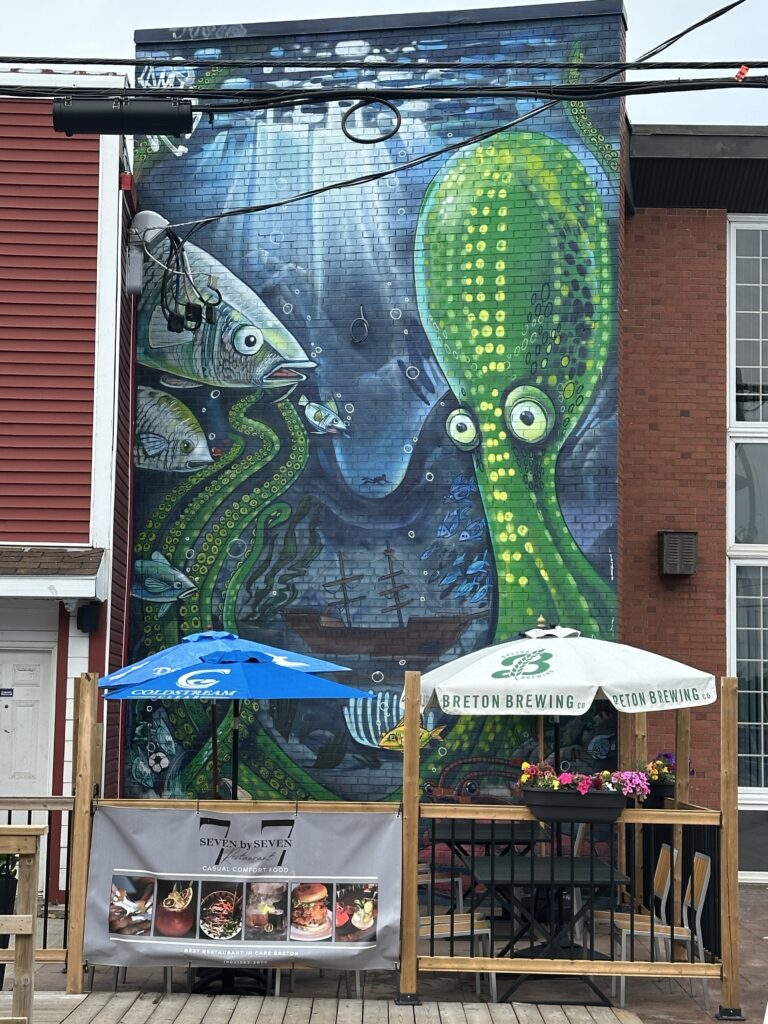
Friendly fishermen in Niels Harbour
We decided to head for Niels Harbour close to the top of Nova Scotia for our final night before making the short crossing to the Island of Newfoundland. It is an adorable little harbour, which has a fantastic view over some dramatic cliffs.
As we entered the bay we saw quite a few lobster traps – and they continued all the way into the harbour entrance, and inside the outer harbour itself. So we were very glad it was a windless day.
The inner harbour is quite small and shallow, so it is not a good spot for a group of boats to go into. Most of the harbour is too shallow for Snow Bear to moor to but the outer harbour and outside wall have around 3 meters.
As we came in, we could see the deepest spot was taken by a fisherman, but as soon as they noticed us they asked how deep our draught was, and then they ran over and moved their boat to make space for us. It really is the people that make cruising the east coast of Canada such an enjoyable and unforgettable experience.
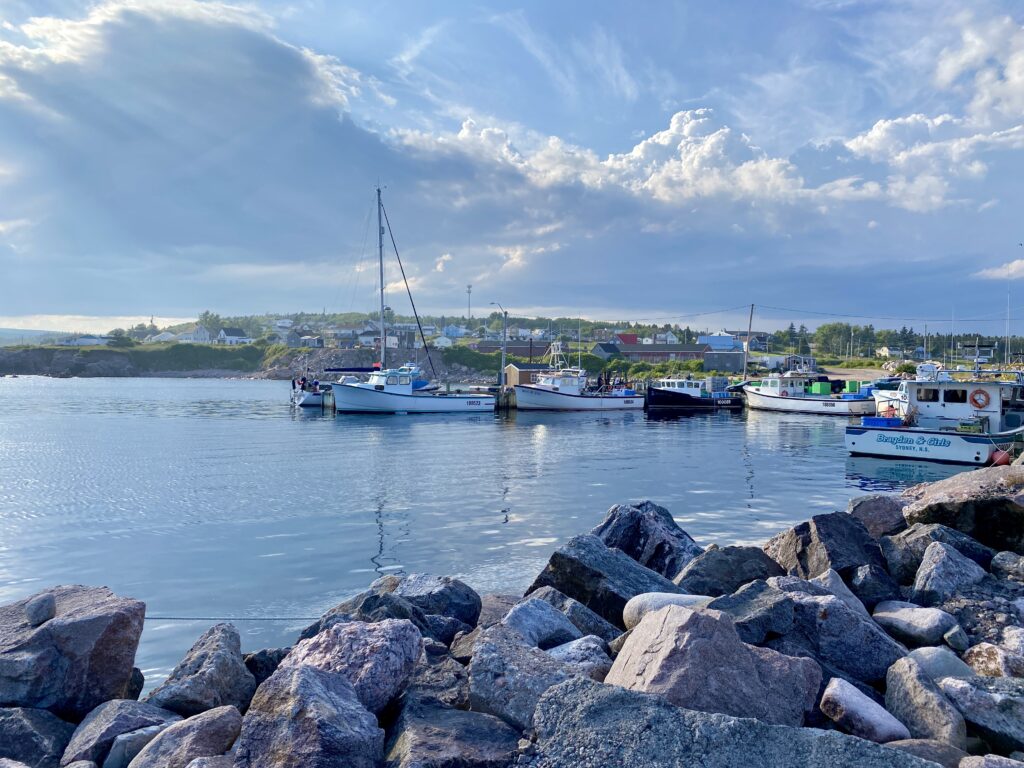
We had a bite to eat in the local cafe and settled in for a good nights sleep before departing for Newfoundland.

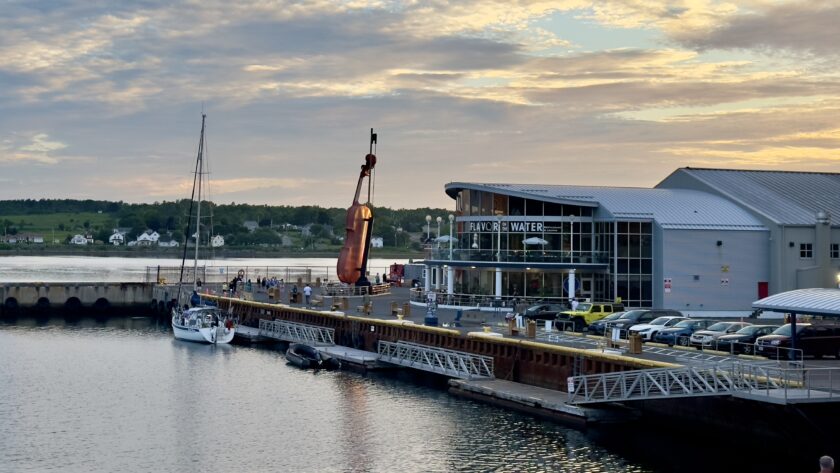
Tusind tak for en meget inspirerende og detaljerig beretning og smukke fotos. Vi skal helt sikkert til den del af Canada til søs eller måske “kun” fra landsiden! Sejlerhilsen fra Marianne&Bjarne: http://www.sjusefine.dk
Hej Marianne og Bjarne
Mange tak for den søde kommentar. Jeg synes virkelig, at det har været et af de bedste steder at sejle, men er sikker på, at det også kunne være sjovt at leje en bil og køre rundt. Dog møder man så mange søde og hjælpsomme folk når man kommer i båd🤩